Digitising the ‘undomained’ .ZADNA CEO, MOLEHE WESI
WOMEN IN LEADERSHIP
Deputy Chief Justice
Mandisa Maya

YOUTH MONTH
SA’s Young Global Leaders taking the lead in our future

CELEBRATING THE ENVIRONMENT
5 new forests in Cape Town
JUNE | 2024
17-18
JULY 2024
The Maslow Hotel, Sandton






CONFERENCE 2024 Brought to you by Join us as we empower Africa building a more prosperous, sustainable & equitable future for the world. topempowerment.co.za Book Now




4| Public Sector Leaders | June 2024 Editorial
JUNE 2024 | ISSUE 40 36 | SA’s Young Global Leaders Taking the lead in our future 38 | Africa’s beloved son Siya Kolisi and the realisation of a long-cherished dream 40 | Agricultural trade surplus South Africa's agricultural trade surplus up 20% y/y in Q1, 2024 42 | Environmental Month 5 new forests in Cape Town 46 | National Youth Policy NYP 2030 and SA’s unemployment challenge Features 10 | Addressing the Nation We need to stay the course to grow the economy and create jobs 12 | Cover Story .zadna CEO, Molehe Wesi: Digitising the ‘undomained’ 32 | Women in Leadership Deputy Chief Justice Mandisa Maya: Leading the judiciary into its next chapter 34 | Trailblazer Edward Kieswetter: Building a robust tax collection agency 44 | In Other News SA takes gold at the Chelsea Flower Show 54 | Regional Focus The Western Cape: Building an energy-resilient province 56 | Legal Matters Protecting your assets: A guide to trust funds 58 | Financial Fitness Financial security in retirement 60 | Upcoming Events June calendar of commemorative events 48 | The National Youth Services Programme Promoting nation building and job creation 50 | June 16 How to spend Youth Day 2024 52 | Environmental Bill Legislating for a greener future 38 36 50 12
Contents

Are you a public service employee on a salary level 1 - 5 ? Tanzanite One offers an employer subsidy of up to 100% subsidy for qualifying members.


Here is what you need to know about Tanzanite One: This is an entry-level Network benefit option tailored for Level 1-5 employees and subject to Network GP Nomination and Specialist Referral Rules.
On Tanzanite One, you receive Coordinated Care for improved healthcare outcomes!
• You are required to nominate a Network GP who will coordinate all your healthcare needs! This means that you will experience far less out-of-pocket payments when visiting YOUR Network GP. You and each of your dependants are required to nominate a GP.
• All members on TANZANITE ONE have access to a network of private hospitals! GEMS has negotiated with a number of private hospitals to set agreed rates and thus offer ALL members on TANZANITE ONE quality healthcare.
• Using GEMS Network providers and Private Network Hospitals means you will reduce your risk of out-of-pocket payments, allowing you to really do more for your family.
Members on Tanzanite One receive the following:

Comprehensive In-Hospital benefits for healthcare services rendered by facilities on the GEMS Network to a specified limit per family per annum;

Comprehensive Out-of-Hospital benefits forhealthcare services typically rendered by providers on the GEMS Network, subject to Network GP Nomination and Specialist Referral Rules;

Access to Tanzanite One GEMS Network providers and medicine on the applicable GEMS Formulary list, which is accessible on the GEMS website;

Three additional non-PMB chronic conditions; and

Access to Public Facilities.





Public Sector Leaders | June 2024 | 5
WhatsApp “ JOIN ”
4367 to join GEMS today!
TANZANITE ONE
to 083 450
0860 00 4367 www.gems.gov.za enquiries@gems.gov.za Contact details Use the QR Code to download the GEMS Member App @GEMSMEDICALAID @GEMSMEDICALAID @GEMSMEDICALAID @GEMSMEDICALAID1 Government Employees Medical Scheme Working towards a healthier you The Government Employees Medical Scheme (GEMS) is an authorised Financial Services Provider (FSP No 52861)


CREDITS
PUBLIC SECTOR LEADERS
The Digimag For Leaders In The South African Public Sector Fully Accredited Member of ABC

Advertising Sales, Distribution and Subscriptions
Top Media & Communications (Pty) Ltd Tel: 086 000 9590 info@topco.co.za | www.topco.co.za
CEO Ralf Fletcher
TOPCO STUDIO
Production Director
Van Fletcher van.fletcher@topco.co.za
Group Editor
Fiona Wakelin fiona.wakelin@topco.co.za


Assistant Editors
Koketso Mamabolo
koketso.mamabolo@topco.co.za
Naledi Mokoena naledi.mokoena@topco.co.za
Contributors
Jessie Taylor
Wandile Sihlobo
Design
Sisanda Voko
Cover Design
Tashwell Brown
Traffic Manager
Daniël Bouwer
artwork@topco.co.za
SALES
National Project Manager
Emlyn Dunn
Tel: 072 1263962
emlyn.dunn@topco.co.za
Brand Coordinator
Sidney Phiri sidney.phiri@topco.co.za
Printers
LAW Print
Images iStock / Unsplash / GCIS | Flickr
Digital Publishing Platforms Issuu Magzter Media Carrier
Head Office
Top Media & Communications (Pty) Ltd T/A Topco Media Elkay House, 186 Loop St Cape Town
Tel: +27 86 000 9590
Fax: +27 21 423 7576
Email: info@topco.co.za
Website: www.topco.co.za (ScanQRcodebelowtoviewwebsite)

DISCLAIMER

All rights reserved. No part of this publication may be reproduced, stored in a retrieval system or transmitted, in any form or by any means, electronic, mechanical, photocopying, recording or otherwise, without the prior written consent of Top Media & Communications (Pty) Ltd T/A Topco Media. Reg. No. 2011/105655/07. While every care has been taken when compiling this publication, the publishers, editor and contributors accept no responsibility for any consequences arising from any errors or emissions.
6| Public Sector Leaders | June 2024
48 34 10
LEADERS IN CYBERSECURITY OPERATIONS MANAGEMENT

Incorporated in 2014, DataProof Communications is a cybersecurity company specialising in cybersecurity operations, incident management and response best practices and technologies. DataProof’s objective is to provide comprehensive cybersecurity solutions through people, processes and technology to help organisations protect the confidentiality, integrity and availability of their ICT assets.
SERVICE OFFERING
Professional Services
• Design, implementation and intergration
• Network, security, mobility, compute, storage and virtualisation
• Migrations
Cyber Security Operations Centre (CSOC)

















Public Sector Leaders | June 2024
ADVERTORIAL
Postal Address: PO Box 3427, Pinegowrie, 2123 | Tel: 011 032 7700 | Fax: 011 032 7788 | Email: sales@dataproof.co.za HEAD OFFICE: Block 09 Pinewood Office Park, 33 Riley Road, Woodmead, Sandton REGIONAL OFFICES: Free State: 89 Clavadel River Lodge, Vaalpark Cape Town: Suite EB04 Ground Floor Tannery Park 21, Belmont Road, Cape Town, 7700 Website: www.dataproof.co.za Endpoint Protection Identity and Access Encryption and MFA Web and Emails Risk and Compliance Data Protection Application and Database Business Continuity and Disaster Recovery Threats protect discover detect analyse Splunk - SIEM - Real-time monitoring - Alerts dashboards& Reports - Threat Intelligence - Incident management & investigations - Integration with Tripwire DG and Centrify to give a complete SOC solution SOC-in-box Centrify - Privilege Identity Management - Identity Consolidation - Privileged User Session Auditing - Server Isolation and Encryption of Data-inMotion - Central Policy Control Vulnerability Management - Comprehensive discovery and profiling of all network assets - Highly scalable architecture with low network and system impact - Advanced vulnerability scoring and prioritization that identifies top risks - Prioritized change results in Tripwire Enterprise based on vulnerability risk Tripwire Enterprise - Discover and baseline all IT infrastructure - Automate IT and security workflow and processes - Trend drift’ from baseline - who what when why - Real-time change detection and audit tracking helps maintain continuous compliance - Dashboards and alerts /reports with real-time system and file integrity monitoring Digital Guardian - CONTROL ALL DATA MOVEMENT AND TRANSMISSION WITH CONTENT AND CONTEXT -AWARENESS - ENFORCE DATA PROTECTION POLICIES ACROSS ALL EGRESS CHANNELS - STOP DATA THEFT – WITHOUT IMPACTING PRODUCTIVITY - CONTROL DOCUMENTS ON MOBILE DEVICES WITH THE DG MOBILE APP FOR IOS - GET GRANULAR CONTROL OF ALL DATA MOVEMENT TO DEVICES/MEDIA - EXTEND YOUR DATA PROTECTION WITH DG ADD-ON MODULES The most advanced cybersecurity operations centre (CSOC) framework in South Africa. OVER 20 000 ENDPOINTS UNDER PROTECTION OVER 20 CLIENTS OVER 1000 000 ATTACKS PREVENTED Cloud Saas On-premise

8| Public Sector Leaders | June 2024
 IBY FIONA WAKELIN
IBY FIONA WAKELIN
Letter from the Editor
Welcome to the June edition of Public Sector Leaders (PSL)
n his letter to the nation, penned on 10 June, President Cyril Ramaphosa took the opportunity to focus on growing the economy and job creation.
“At this important moment in the life of our nation, eradicating poverty and inequality and reducing unemployment must remain our overriding collective priorities. We cannot address these challenges and improve the lives of our people without attracting more investment in our economy and accelerating growth,” said President Ramaphosa.
Our front cover icon this month is Molehe Wesi, ZADNA CEO who is passionate about digitising the “undomained”.
“One of the programmes which is close to our hearts is aimed towards the informal economy and provides a digital presence to informal traders so that they extend their reach and access to other markets. We hope to achieve this with a number of partners, both the department and, of course, within other departments of government,” said Molehe.
In this June edition of PSL we celebrate youth and the environment. Our Woman in Leadership this month is Deputy Chief Justice Mandisa Maya who is expected to take the place of South Africa's highest judge - the Judicial Service Commission (JSC) has endorsed Deputy Chief Justice Maya as the next Chief Justice. The JSC is a body specially constituted to recommend persons for appointment to SA's judiciary.
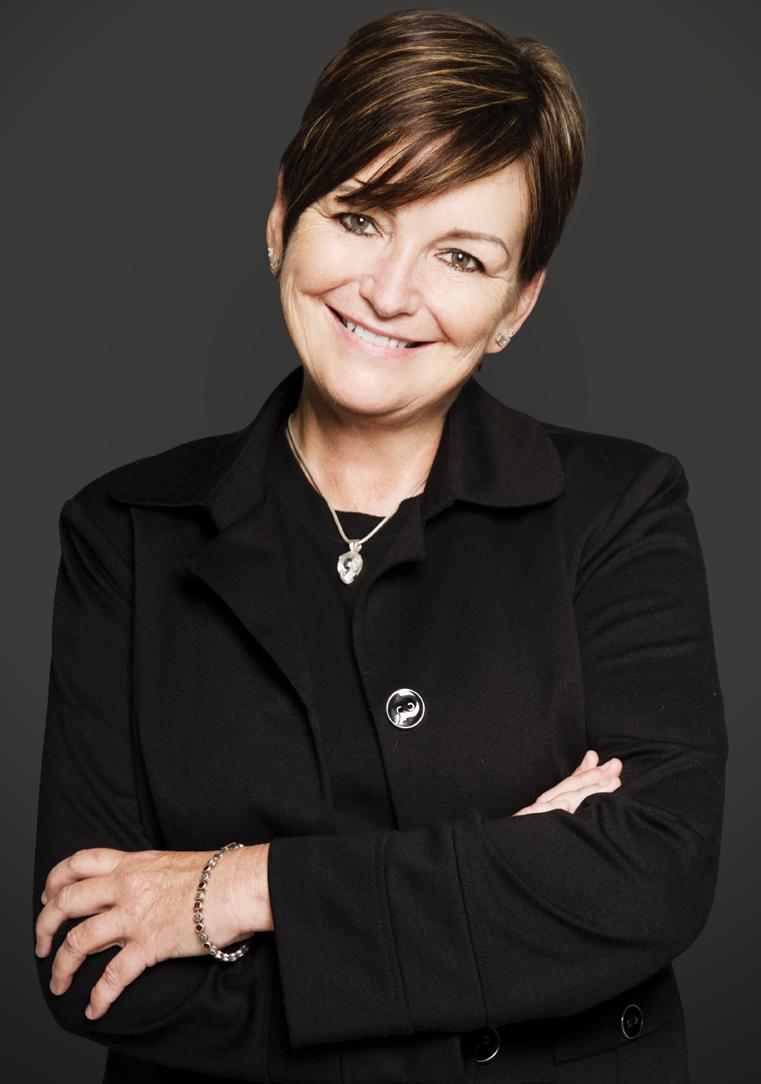
The Trailblazer spotlight falls on South African Revenue Service (SARS) Commissioner Edward Kieswetter who will remain at the helm of the nation’s tax-collecting authority. His five-year term was set to end in April, but President Cyril Ramaphosa requested that his term be extended by two years. The decision will allow SARS the opportunity to continue to implement its strategic intent and transformation, a plan the organisation started in 2019.
Zooming in on the environment – exciting news is that 5 new forests have been planted in Cape Town and a piece of legislation to guide South Africa's response to the climate crisis has been
unanimously adopted by the National Council of Provinces. The Climate Change Bill is now pending the President's signature to make it law.
June 16th is Youth Day and look no further than these pages if you are wondering how to celebrate this watershed event. Our Regional Focus takes a look at Western Cape and in Legal Matters we focus on trust funds – the pros and cons.
Our cornucopia of features includes a tribute to Siya Kolisi and the realisation of a long-cherished dream; at this year’s African Union Sports Council Region 5 Sports Awards, which were hosted in Lusaka, Siya was honoured with the Sportsman of the Year Award, adding to the People’s Choice and Sports Star of the Year awards he received at the 17th edition of the SA Sports Awards; continuing with our gees , In Other News brings you a celebratory article on SA taking 3 gold medals at the Chelsea Flower show, displaying our unique floral heritage for all the world to see; and an article by Wandile Sihlobo, Chief Economist of the Agricultural Business Chamber of South Africa brings us up to date on SA’s agricultural trade surplus.
From all of us at Public Sector Leaders, we hope you enjoy the read.
 FIONA WAKELIN | GROUP EDITOR
FIONA WAKELIN | GROUP EDITOR
Public Sector Leaders | June 2024 | 9
EDITOR’S
LETTER
BY FIONA WAKELIN
We need to stay the course to grow the economy and create jobs
On Monday 10 June 2024, President Ramaphosa wrote his weekly letter to the nation focussing on boosting the economy and the continuation of economic reforms.
“At this important moment in the life of our nation, eradicating poverty and inequality and reducing unemployment must remain our overriding collective priorities. We cannot address these challenges and improve the lives of our people without attracting more investment in our economy and accelerating growth.
“Economic growth, transformation and job creation has been at the centre of the programme of the Sixth Administration. Since 2019, we have implemented a range of growth-enhancing structural reforms to remove the constraints which have held back growth, to attract higher levels of investment, and to make our economy more efficient and competitive,” – H.E. Ramaphosa.
In this letter His Excellency invokes the establishment of Operation Vulindlela in 2020, a government-wide initiative to support economic recovery, and then goes on to list further economic reforms which include an overhaul of the energy
sector, introducing private sector participation in the operation of port terminals, enabling open access to the freight rail network, completing the auction of highdemand broadband spectrum and implementing reforms to overhaul the visa regime.
“The progressive implementation of these structural reforms has helped to improve investor confidence. This has in turn enabled us, despite an extended period of load shedding, to attract investment into the economy across a range of industries. The structural reform process has produced tangible results and laid the groundwork for sustainable growth into the future.
“Regardless of the form or composition of the incoming administration, it is important that the momentum of reform be retained and sustained. While we have come a long way in the reform journey, there is much work that still needs to be done to reignite growth in our economy. A change in direction would derail the positive progress that has been made and take us back to the starting blocks,” – President Ramaphosa.
His Excellency is clear that it will take time for the impact of many of these reforms to be fully felt, while at the same

time, the process of recovery and rebuilding is well underway. President Ramaphosa is also unequivocal that these reforms must continue alongside measures to advance economic inclusion, such as skills development, addressing spatial inequality and investing in skills development and public employment programmes.
“To realise higher economic growth and create more jobs, we need a combination of structural reforms, increased investment and sound macroeconomic management. As the Minister of Finance noted in this year’s Budget Speech, successful efforts to improve the fiscal position, complete structural reforms and bolster the capacity of the state will in combination reduce borrowing costs, raise confidence, increase investment and employment, and accelerate economic growth.
“As the country prepares for a new democratic administration, all parties need to work together to sustain the momentum of reform, growth and transformation. A stable and effective government committed to economic reform will enable us to build an inclusive and growing economy that benefits all South Africans,” H.E. Ramaphosa.
10| Public Sector Leaders | June 2024 ADDRESSING THE NATION
 BY FIONA WAKELIN AND KOKETSO MAMABOLO
BY FIONA WAKELIN AND KOKETSO MAMABOLO

Over the last twenty years the .za Domain Name Authority (.zadna) has positioned itself as one of the most stable administrators of country code top-level domains (ccTLDs) on the continent, tasked with the management and regulation of the domain namespace. Initially a fragmented industry, it has been consolidated over the years and has grown rapidly with over 1.3 million domain names registered. Under the guidance of CEO Molehe Wesi, .zadna continues to expand and its work has gone beyond that of a regulation authority, with a range of programmes offering people and organisations access to a digital presence. Here Molehe takes us through some of .zadna’s work and its key projects.
Molehe Wesi .zadna CEO
COVER STORY
Digitising the ‘undomained’
How do domains work? Simply put, domain names give us an easier way to remember websites. “Otherwise, you’ll be forced to remember numbers instead of names,” explains Molehe.
One of .zadna’s most notable achievements over the last twenty years was the transition from ZA Central Registry (ZACR) to the ZA Registry Consortium (ZARC) without a lapse in access, both within and outside South Africa.
He says despite what people think, the domain name industry is sizable. From a commercial perspective, .zadna is one of the largest on the continent.
Anyone with a South African ID can become a member, and the organisation accounts to both members - who advise on policy and approve plans and budgets - and the Department of Communications and Digital Technologies.
Along with its private sector and civil society partners, other stakeholders include entities within the departments portfolio, such as the Film and Publication Board, the Universal Service and Access Agency of South Africa (USAASA), the National Electronic Media Institute of South Africa (NEMISA) and the State Information Technology Agency (SITA) who are the administrators of the .gov.za and military .za domains.
Many flocked over to social media platforms during their rapid rise, abandoning domain names.
“However, we saw an opportunity to say, instead of viewing it as a threat, which it is, rather turn it into an opportunity for ourselves and see how best we can align, while people retain social media presence coming from the domain name site,” says Molehe.
One of .zadna’s main programmes is digitising the ‘undomained’. With the objective of giving schools a digital presence and a target of over 22 000 schools, the .za Schools Digitisation Project is their highest priority.
“I think it came to the fore during the pandemic that the schools which come from very disadvantaged areas, especially the ones from quintile one to quintile three, don’t have the same resources as the others.”
While also looking at providing learning management platforms to schools the “intention of the programme is to enable teaching to happen anywhere, anytime,” says Molehe.
In an effort to help empower traditional authorities to be able to document their own stories, .zadna is also working on providing them with a digital presence. They are also partnering with NEMISA to provide digital upskilling programmes. The positive contributions don’t end there.
“One of the programmes which is close to our hearts is aimed towards the informal economy and provides a digital presence to informal traders so that they extend their reach and access to other markets. We hope to achieve this with a number of partners, both the department and, of course, within other departments of government.”
Molehe finds excitement in everything .zadna is involved in, having found it easy to transition from an ICT background in the higher education sector. He brings to the role a consultative leadership approach and is not one to shy away from allowing others to guide him, allowing him to be better informed when he makes decisions.
Passionate about his job and rejuvenated by spending time with his wife and children, Molehe finds comfort in music and is currently doing his PhD in Information Systems at UCT.
One of Molehe’s most memorable moments since joining the organisation four years ago was last year’s Africa Internet Summit, which .zadna hosted with the African Network Operators Group. The summit provided the continent’s roleplayers a platform to discuss key issues in the African internet space, further entrenching .zadna's position as one of the continent's leading country code top level domain (ccTLD) administrators and leader in the internet industry.


Public Sector Leaders | June 2024 | 13
Anyone can gain from SA’s web ecosystem
Calling
on SMMEs, youth and women to actively participate in South Africa’s domain name industry
By Angel Selebano

Since 1994, a few players have dominated South Africa’s internet industry. This may no longer be the case as the .za Domain Name Authority (.zadna) creates opportunities for new entrants to the industry, particularly for South African youth, women, and people living with disabilities in the Information Communications and Technology (ICT) sector.
.zadna is the statutory regulator and manager of the .za domain namespace; .za is the internet country code Top-Level Domain for South Africa.
The Authority is actively seeking ways and means to ensure that South Africans participate in this simple yet seemingly complex ecosystem. This is done through the constant encouragement of citizens within the sector to subscribe as members of .zadna as determined by the Electronic Communications and Transactions (ECT) Act 25 of 2002. This is a crucial step in bridging the digital divide and allowing all stakeholders to contribute to the policy development of the .za namespace and form part of the betterment of the country’s internet ecosystem.
More educational initiatives are needed to ensure that communities are empowered
with knowledge about business opportunities available within the industry. These opportunities vary from being a domain name registrar, which allows you to own an entity that provides domain names, such as co.za, to becoming a domain reseller. Thanks to the .zadna, every South African can now benefit from the website value chain.
Today, SMMEs, people with disabilities, women-owned entities, and the youth can actively participate and financially gain from the value chain. CEO Molehe Wesi says that the organisation is determined to make the industry fluid so hat marginalised groups, particularly black youth, can actively participate in it.
“We have decided to clear the space for all people, irrespective of their demographic background, to embrace the opportunity presented by the technology landscape. Everyone uses the web every day, and we don’t see any reason why they shouldn’t participate in the economic activity of the industry that they so dearly support,” says Wesi, adding that “.zadna as a regulator of the domain namespace is now facilitating an enabling environment for our entrepreneurs to contribute meaningfully to the ICT sector.” In practice, this means that a young entrepreneur from a township
can now actively participate in the domain namespace by either becoming a registrar, a website domain name reseller or even an entity that provides opportunities for the youth to drive the ecosystem.
“Now more than ever, we are determined to realise the obligations of the Electronic Communications and Transactions Act, in that we demystify the industry and enable more participants to engage in economic activity. Anyone, and literally anyone, can participate,” says Wesi. “We will continue to conduct training to empower passionate young people, people with disabilities, and women to actively engage in the process and embrace opportunities. If we as .zadna don’t drive this economic transformation, who will?”
According to Wesi, .zadna strives to strengthen relations and engagements with the .za stakeholders and ensure that collaborative efforts are pursued, and the namespace remains competitive and robust. “As a regulator, we are committed to working closely with key stakeholders and facilitating engagements that drive the advancement of the .za namespace. Furthermore, .zadna collaborates with its key stakeholders through various means to ensure that our direct and indirect stakeholders, local and international partners, and .za collaborators across the globe contribute to matters of the South African Internet space in a meaningful and sustainable manner.”
The .za Domain Name Authority (.zadna) is a not-for-profit organisation that manages and regulates the .za namespace. The Authority is accountable to its members and the South African Department of Communications and Digital Technologies but does not receive government funding.
14| Public Sector Leaders | June 2024 CLIENT ADVERTORIAL .ZADNA


.za Online Behaviour and Protection
Legitimate Internet users rely on domain names for using the Internet while attackers use or abuse the domain names as reliable, instantaneous, and distributed attack infrastructures. Thus, there has been a surge as far as abusive and offensive registrations are concerned. This surge can be attributed to the fact that more businesses are entering the online market, and as such, Covid-19 motivated more companies to have an online presence.
To achieve and yield intrinsic domain value, the domain name system (DNS) is one of the vital elements of the Internet, providing and translating IP addresses used by computers to communicate name service for the Internet and assist Internet users to navigate. Domain names have a hierarchical structure under the DNS. These are the top-level domain (TLD), country code Top-Level Domain (ccTLD) and Second Level Domain (SLD). TLD is the last character of the domain name, e.g .za on www..zadna.org.za Every country in the world has its own delegated country-code TLD, and South Africa, for instance, uses ‘za' as its country code TLD. SLD is the 'org.za', a descriptive element denoting the word 'organisation' and mainly used to register noncommercial domain names in South Africa.
WHAT IS ADR FOR .zadna?
ADR is utilised to resolve matters concerning abusive and offensive
domain name registrations to avoid expensive, procedural and lengthy court proceedings. The SAIIPL is one of two accredited dispute resolution providers for .za domain name registrations. The other accredited service provider is the Arbitration Foundation of Southern Africa. These service providers align the services they provide with the ADR Regulations to resolve the ADR matters.
The Regulations follow a similar procedure to the World Intellectual Property Organization (WIPO) procedure in its administration of the Internet Corporation for Assigned Names and Numbers (ICANN) Uniform Dispute Resolution Policy.
.zadna has a straightforward approach to resolving domain name disputes. A domain name dispute is a dispute regarding a registered domain name, in which a dispute is between a complainant and a person who registered a domain name (i.e. registrant). Domain name dispute resolution is not always possible because of the legal and procedural complexities surrounding formal dispute resolution. .zadna has a simple and straightforward approach to resolving domain name disputes for disputes to be resolved quickly and efficiently. Thus, .zadna through the Alternative Dispute Resolution (ADR) Regulations, provides a dispute resolution landscape to accommodate these growing needs of DNS by introducing less formal procedures for dispute resolution.
WHEN DOES A DOMAIN DISPUTE ARISE?
A domain name dispute may arise as a result of abusive domain registration and/or offensive domain name registration.
DO YOU KNOW THE DIFFERENCE BETWEEN ABUSIVE AND OFFENSIVE REGISTRATION?
Abusive registrations are domain name registrations that infringe on the rights of a third party, such as a trademark or a well-known name. This can include registering a domain name that is identical or confusingly similar to a trademark or a well-known name in bad faith, with the intention of profiting from it or causing harm to the trademark owner.
On the other hand, offensive registrations are domain name registrations that contain language or imagery that is considered to be offensive, derogatory, or discriminatory towards a particular group of people. This can include domain names that contain hate speech, racist language, or discriminatory terms. Broadly speaking, an offensive registration is contrary to good morals or offends any group of people.
ARE YOU A VICTIM OF OFFENSIVE OR ABUSIVE DOMAIN NAME REGISTRATION?
Spotting abusive and offensive domain name registrations can be challenging, as it often requires a thorough analysis of the registration information and the content associated with the domain name. However, there are some common indicators that can help identify potentially abusive or offensive domain name registrations:
• Trademark infringement
• Bad faith registration
• Offensive language or imagery
• False or misleading information
16| Public Sector Leaders | June 2024
CLIENT ADVERTORIAL .ZADNA

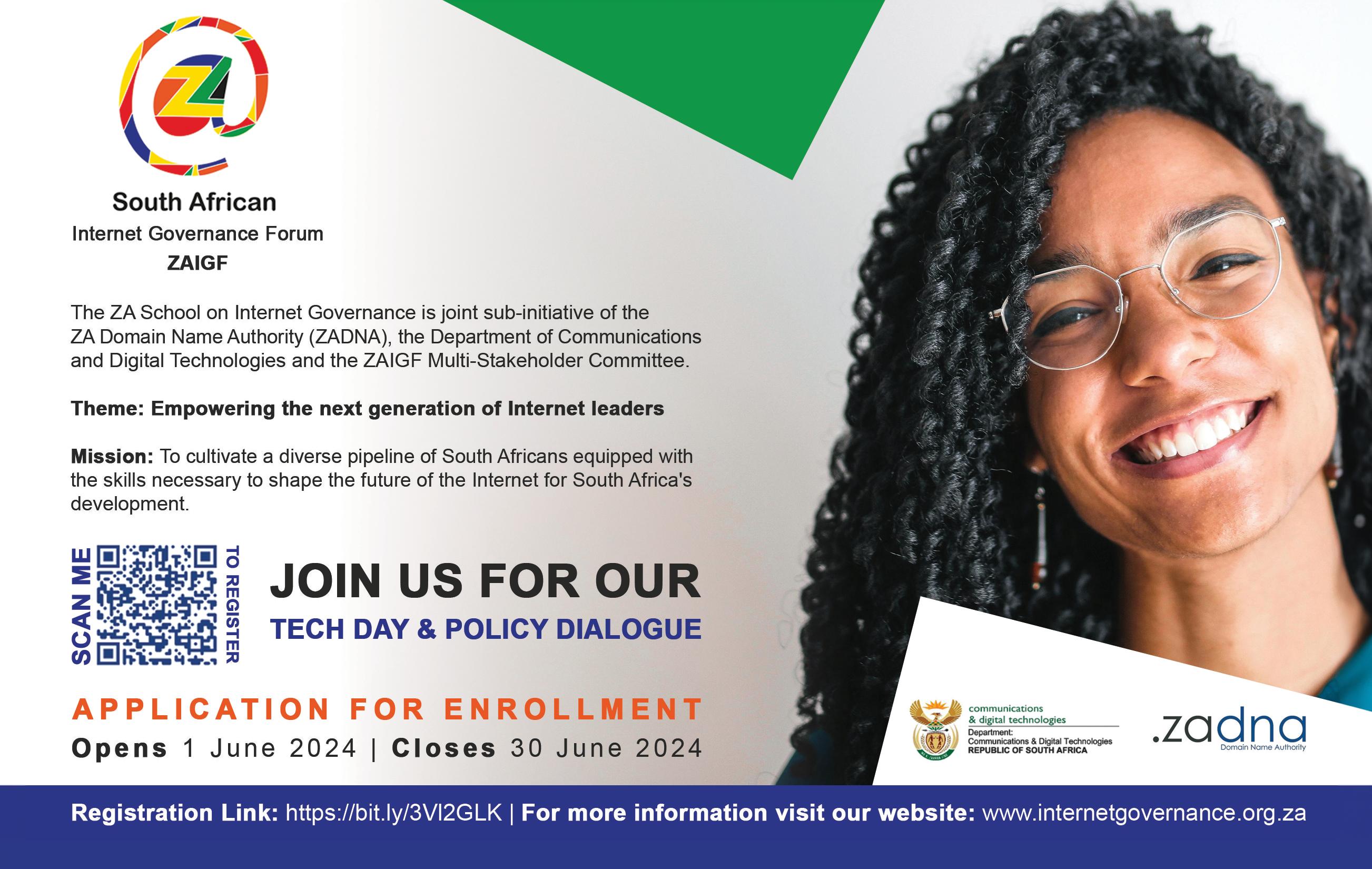
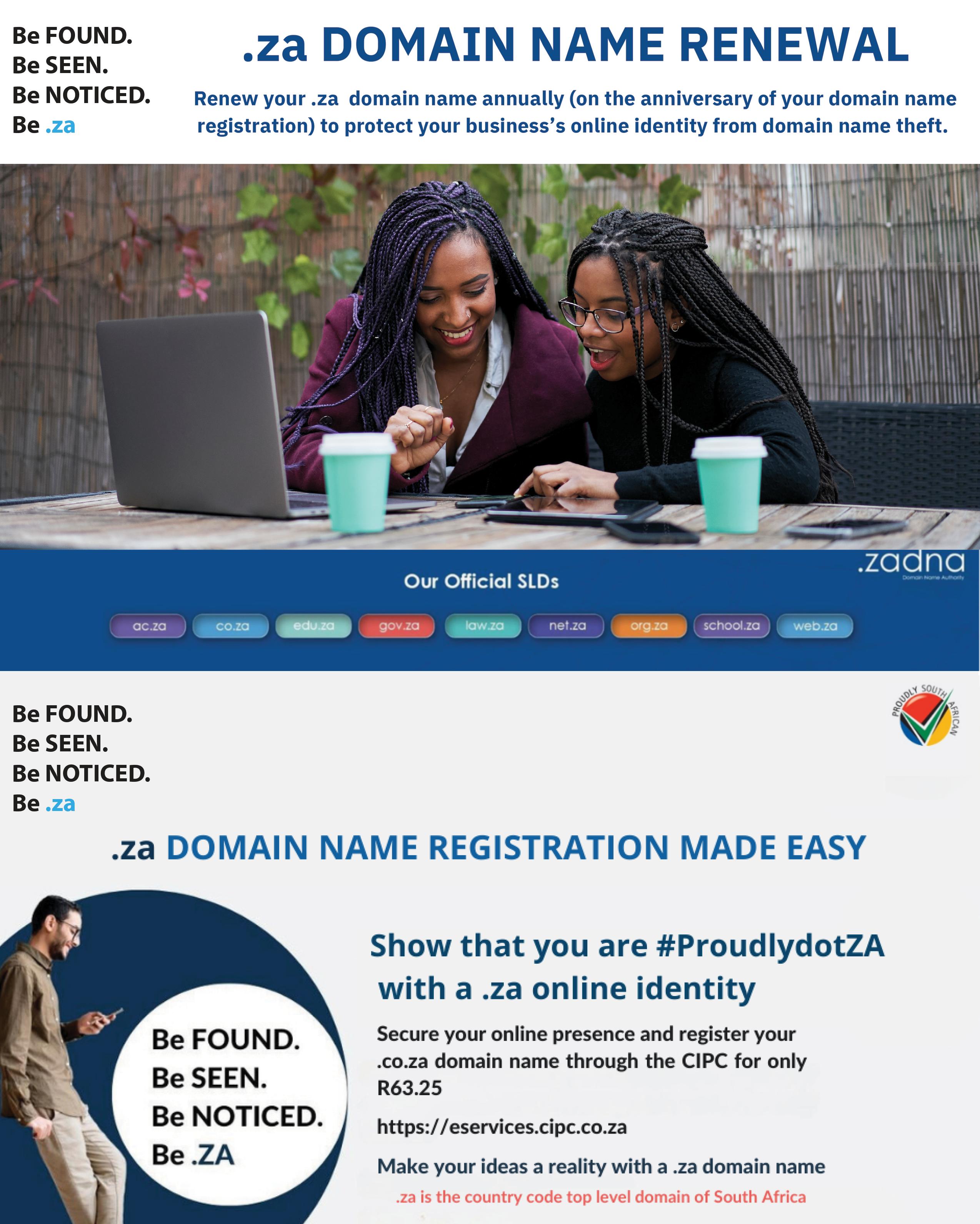
Stay informed about environmental, social, & governance trends, strategies & best practices. Feature in our publication to join us in shaping a better tomorrow.







World-Class Editorial Expert Contributors Targeted Audience Prestigious Partnerships
Tim Sussman
SVP, Head of Global Public Sector, IdeaScale
“SCALE OR BE LEFT BEHIND”
IdeaScale software empowers governments and organisations to brainstorm ideas, gather real-time feedback, and identify innovative solutions. The platform equips clients with moderation tools to effectively prioritise and analyse collected comments and suggestions.
What are the barriers to government innovation? How can my organisation leverage crowdsourcing and open innovation to problem-solve and plan for the future? These are a few of the big-picture challenges that IdeaScale prepares, and empowers, clients to answer.
IdeaScale provides every client a Customer Success Manager, and offers additional 24/7 client support for ongoing assistance.
ONE OF YOUR OFFERINGS IS SOLUTIONS FOR GOVERNMENT –PLEASE SHARE WITH US SOME OF YOUR FLAGSHIP PUBLIC SECTOR PROJECTS.
We got our start in 2009 when President Obama signed a
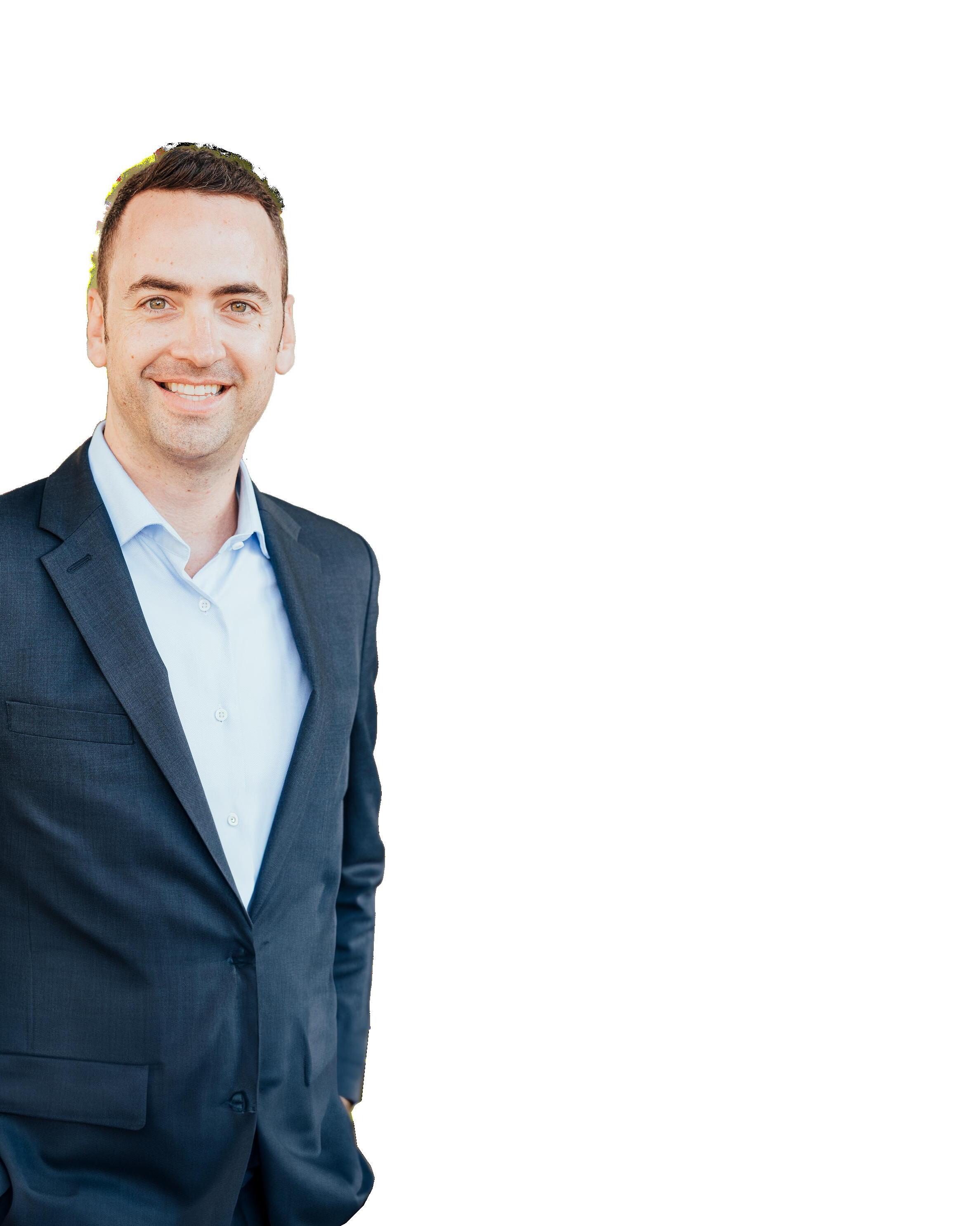
memorandum of transparency and open government in the United States, urging government agencies to better engage citizens. At that time, dozens of government agencies implemented IdeaScale to facilitate interaction between the agency and its own employees, citizens, and key stakeholders. This was the catalyst for IdeaScale's journey in partnering with government agencies to foster collaboration and innovation from within.
A favourite project of mine is IdeaScale partnering with the City of Atlanta. They launched a city-wide employee idea competition, designed to solicit feasible solutions on how the City can reduce waste, cut red tape, and save money on operations. Not only was the competition turnout impressive– they received hundreds of ideas and improved morale across the workforce– the top three ideas alone amounted to a potential cost savings of $7.1 Million annually. Those ideas included a new inmate cleaning programme from the Department of Corrections, a pay-as-youthrow waste management programme, and e-records for all City communications.
CLIENT INTERVIEW IDEASCALE
Another meaningful project is the U.S. Coast Guard's innovation crowdsourcing platform through IdeaScale, called “CG_Ideas@ Work”. The platform provides a means for members of all ranks to communicate their challenges, share best practices, and propose creative ideas and solutions directly to Coast Guard leadership. Innovation can excel without the traditional barriers of rate, rank, community, or geography. One idea from a female crewmember resulted in female urination devices being installed on every CG vessel, a $15 Amazon fix, that prevented health and readiness issues of female members. It was amazing to see an impactful idea be not only heard by leadership, but quickly implemented.
DOES THE NAME IDEASCALE IMPLY THAT YOU HAVE LONG TERM RELATIONSHIPS WITH YOUR CLIENTS – YOU ARE PART OF THEIR SCALING JOURNEY?
Actually yes - and that journey is constantly evolving as government agencies continue to undergo a transformation to evolve their programs, modernise IT and cybersecurity practices, innovate their products and services, and enhance risk management as part of their strategic plans. It is truly a mutual partnership built on trust.
As we have gained a better understanding of the needs of our government clients, we are able to give them a customised approach and help them through the often complicated innovation process. This is especially important in this new world of virtual / hybridwork. Fostering innovation for the government allows each organisation to adapt to shifting customer and employee needs and quickly identify new opportunities or improvement areas. Scale or be left behind.
WHAT DOES YOUR ROLE AS SENIOR VICE PRESIDENT, HEAD OF GLOBAL PUBLIC SECTOR, ENTAIL?
I am lucky. I get to work with an amazing team across the world
and a strong local presence in Cape Town, South Africa. We have a special comradery and share a common goal - to help our clients empower their most valuable assets - their people. I try my best to lead by example everyday, an attribute I think all great leaders should have.
My role entails driving global business expansion efforts, driving profitable sales growth and retention across a diverse customer set with broad capabilities of SaaS, IT, engineering, and managed services, strategy, program execution and P&L management.
WHAT EXCITES YOU ABOUT WHAT YOU DO?
THE
TECH AND THE PEOPLE!
You know in the early days, government agencies just wanted ideas. But that’s too vague. What are the outcomes? How do you collaboratively transform that input into actionable project plans? We wound up building innovation features that allow clients to take scalable actions on those ideas – i.e. connecting them to other concepts, senior leaders, funding and more. Organisations can then develop these larger concepts into new policies and services or new cost-savings and employee engagement measures that will shape the future
It means that a good idea can come from anyone, anywhere, at any time.
HOW DOES THE PACE OF CHANGE IN TECHNOLOGY IMPACT YOUR BUSINESS?
We’ve already done a lot with natural language processing (NLP), and mixing machine learning with the crowd, there are some beautiful results. Internally, we’ve adopted AI and other technologies across the company to improve our productivity as a team (in 2024 alone, productivity is up >25% thanks to new technology adoption).
IN YOUR OPINION WHAT MAKES IDEASCALE STAND OUT FROM YOUR COMPETITORS?
Our customer service. We have clients consistently sharing that our customer service is second to none. Most companies don’t have that. It makes all the difference in the world - going above and beyond the call of duty to problem solve and be responsive - even if you don’t have the exact answer they are looking for in that moment. We provide every client a Customer Success Manager, and offer additional 24/7 client support for ongoing assistance.
WHAT ARE YOU CURRENTLY READING AND WOULD YOU RECOMMEND IT/ THEM TO FRIENDS AND COLLEAGUES?
The Obstacle Is the Way: The Timeless Art of Turning Trials into Triumph by Ryan Holiday, and Creating Innovation Navigators: Achieving Mission Through Innovation by Sabra Horne. Highly recommend both!
WHAT IS ON THE HORIZON THAT YOU ARE MOST LOOKING FORWARD TO?
We all know that AI has arrived and is here to stay. In the U.S., President Biden recently announced new rules mandating each federal agency to appoint a chief AI officer, a role that focuses on promoting AI innovation (and also watching for its dangers). Despite the public sector’s understandably cautious approach, AI is well-positioned and has potential to significantly increase the efficiency and effectiveness of government workers.
DO YOU HAVE A MESSAGE FOR OUR READERS?
Yes, innovation and change in the public sector can seem like a daunting or impossible task. Start with your WHY and small actions. Then get to the “what” and “who” (90% of people miss this). One small step. One new problem is solved every day. Innovation happens piecemeal, not massively, until it becomes part of our function.
Public Sector Leaders | June 2024 | 21
Harnessing the power of crowdsourcing
Pioneering positive change in South Africa

In an era defined by connectivity and collaboration, the transformative potential of crowdsourcing software emerges to drive positive change and foster a brighter future for South African citizens. At IdeaScale, we are passionate about harnessing the collective intelligence of diverse stakeholders to create impactful solutions that address the world's most pressing challenges. After establishing ourselves as industry leaders in the United States, IdeaScale has expanded globally to act as a catalyst for change worldwide. We are proud to offer transformative government-to-citizen (G2C) crowdsourcing solutions tailored to the needs of South African government organisations.
22| Public Sector Leaders | June 2024 ADVERTORIAL IDEASCALE
POSSIBLE SOLUTIONS FOR THE SOUTH AFRICAN GOVERNMENT
When organisations need a streamlined, trackable, and efficient way to collect ideas, they bring in IdeaScale. South African government organisations face a range of complex challenges that our crowdsourcing solution can help address. Some of the major issues include:




Service delivery improvement: National departments, provincial departments, and municipalities all often struggle to efficiently deliver services to citizens, leading to inefficiencies, delays, and frustration among the public. Whether you’re needing to improve water service delivery or solve public transportation inefficiencies, IdeaScale can facilitate citizen feedback mechanisms to gather real-time insights, identify pain points, and prioritise areas for improvement.
Policy formulation: Crowdsourcing software can facilitate collaborative policymaking processes, allowing government organisations to solicit feedback, gather ideas, and incorporate diverse perspectives into policy formulation and decision-making processes.
Budgetary limitations: IdeaScale is commonly used to help organisations effectively identify cost-saving measures, solutions, and alternative funding sources to address resource constraints and optimise budget allocation.
Transparency and accountability: Ensuring transparency and accountability is essential for departments and municipalities to build trust and legitimacy among citizens. IdeaScale provides a platform for open communication, data sharing, and collaborative problem-solving. IdeaScale guides you from ideation to implementation, making the innovation process transparent for all users.

Community engagement and participation: Building strong, inclusive communities requires active engagement and participation from citizens in the decision-making process. IdeaScale empowers employees or citizens to contribute their ideas, expertise, and feedback on issues that matter to them, fostering greater civic engagement, participation, and empowerment within communities.

Public Sector Leaders | June 2024 | 23

IDEASCALE SOLUTIONS FOR THE UNITED STATES
Every year, the President of the United States puts out an open call out to all federal employees inviting them to publicly submit their money-saving ideas online using IdeaScale technology. This call is promoted by various branches, departments and organisations within the government encouraging employees to share their thoughts on the subject.
The ideas are submitted, users vote the ideas up and down and the best ideas are identified. The Office of Management and Budget then narrows down the best ideas to a “final four” which can be viewed and voted on by the American public. The winner is granted the honour of presenting his or her idea to the President in Washington, DC.
Over five years, 90 000 ideas were submitted by tens of thousands of government employees and 500 000 votes were cast, ensuring that the top ideas were identified, developed, and implemented. Overall, $20 000 000 in savings were generated from the top ideas to help the government operate more efficiently and effectively.
IDEASCALE FOR NASA
The National Aeronautics and Space Administration (NASA) is a United States government agency that is responsible for science and technology related to air and space. When the COVID-19 pandemic hit the US in March 2020, NASA’s workforce expressed their desire to help combat COVID-19.
NASA launched an internal, agency-wide call for ideas called NASA@WORK using IdeaScale’s crowdsourcing software. The campaign focused on three challenge areas: personal protective equipment, ventilation devices, and monitoring and
ADVERTORIAL IDEASCALE
forecasting of the spread and impacts of the virus.
NASA@WORK ideas added value to several projects, including one using NASA’s supercomputing capability to advance research for treatments and a vaccine, as well as offering AI expertise to develop new data mining techniques for answering high-priority questions related to COVID-19. Other ideas informed efforts that have led to new virus tracking and forecast modelling apps, 3D printed masks and other PPE equipment, impact visualisations, NASA-modified ventilators, sensors for virus detection, and more.
IDEASCALE FOR THE UNITED STATES COAST GUARD
The United States Coast Guard (USCG) is a branch of the United States Armed Forces responsible for protecting US waterways, ports and shorelines by enforcing US laws and serving as a first responder on the water. The Coast Guard had a clear challenge - they needed a way to find great ideas out in the fleet and be able to communicate those ideas to decision-makers to solve the problems. Before IdeaScale, the USCG used a SharePoint spreadsheet as a large database of ideas where users could view submissions—but they couldn’t add comments to them, collaborate on projects, or find ways to easily put ideas into action. They needed a better approach.
The Coast Guard brought in IdeaScale in 2015, and has been using the platform ever since. And what impact have they had? Their crowdsourcing efforts have saved lives. In 2017, the US experienced one of the worst hurricane seasons on record, and the Coast Guard found themselves mired in slow, outdated lessons learned processes for sharing best practices.
To modernise how they shared information, the Coast Guard
launched a “Hurricane Lessons Learned” campaign through their CG_Ideas@Work crowdsourcing platform. Instead of disparate emails, text messages, and even— yes—pen and paper, members could now share ideas in a single place, regardless of geography. As a result, hurricane first responders shared life-saving ideas with each other.
For example, one member shared an idea to monitor social media after seeing distress signals on Instagram. Another shared an idea for better mobile tech in disaster areas. Another shared an idea to improve location targeting. The list went on and on, and the result was better service to the American people in times of emergency.
THE IDEASCALE DIFFERENCE
Top government organisations choose IdeaScale time and time again, but not only because of our proven track record of driving innovative change. We’re a trusted partner for top government organisations because we operate with the highest level of security to safeguard valuable data and ensure compliance with acts like POPIA (Protection of Personal Information Act). We focus on the customer journey and offer professional training for clients early in their innovation journeys. This commitment extends to providing exceptional customer service, ensuring a seamless journey for every user with 24/7 assistance and dedicated Customer Success Managers.
GLOBAL PARTNERSHIPS AND COLLABORATIONS
In the arena of global partnerships and collaborative endeavours, IdeaScale emerges as a catalyst for worldwide innovation and progress. Operating on a global scale, IdeaScale extends its transformative platform to
empower individuals and organisations across continents, enabling them to crowdsource solutions and collectively forge a brighter future. Empowering diverse communities worldwide to collaborate, innovate, and shape a better tomorrow remains our core mission as IdeaScale continues to expand its global reach.
BUILDING A BETTER FUTURE TOGETHER
From communicating life-saving best practices, to advancing research for a vaccine for a global pandemic, the impact your ideas can have is limitless. At IdeaScale, we’re committed to helping build a better future by empowering your citizens or employees to share their ideas and insights. If there’s one thing we’ve learned from the millions of ideas submitted through our solution over the years, it’s that the brightest ideas can come from anyone, anywhere, at any time.

What impact can your organisation make?
Let us help you find out. Contact us to learn more about IdeaScale's G2C solutions:
Public Sector Leaders | June 2024 | 25
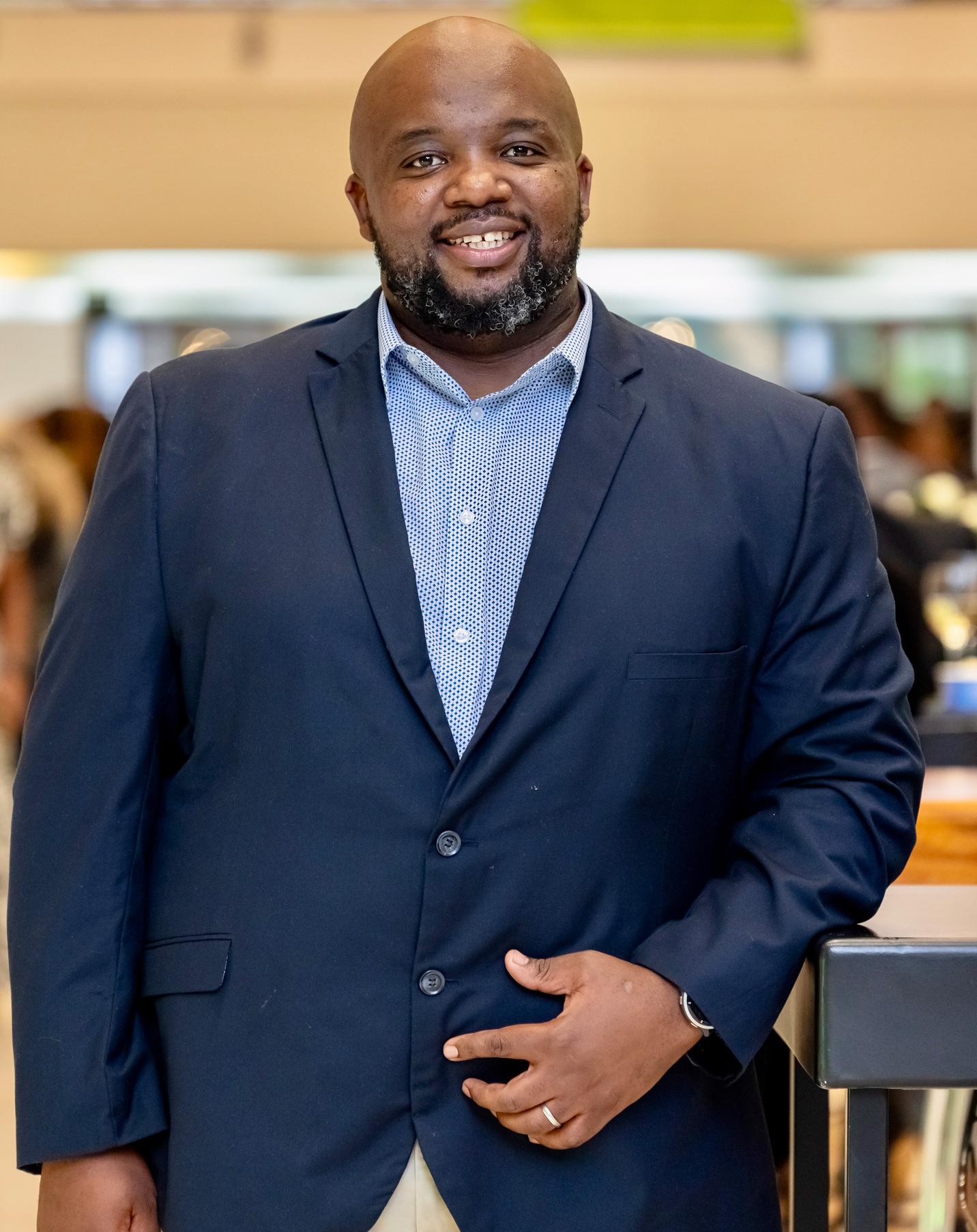
Mosuoe
Sekonyela, Chief Government Relations Officer
Harambee Youth Employment Accelerator
CLIENT INTERVIEW HARAMBEE
A nuanced and holistic approach to solving youth unemployment
“Young people have to be at the centre of the solution that you are trying to develop, and you need to have the voice of those young people.”
“The problem we are trying to solve is continuously changing. It’s very dynamic,” says Mosuoe Sekonyela, the Chief Government Relations Officer at Harambee Youth Employment Accelerator, chatting to Public Sector Leaders about their work, and approaches to the youth unemployment crisis.
Inspired and motivated by the 3.8 million young people they support on the SA Youth platform, and the prospect of building systems that are operable, Mosuoe believes the barriers and challenges in the labour market can be solved through collaboration between various stakeholders, such as government and businesses.
“We are an organisation that seeks to accelerate youth employment. We do this through partnering with a whole range of stakeholders and society, to unlock jobs, and ultimately to dismantle any barriers that make it difficult for young people to access jobs,” explains Mosuoe.
Harambee’s work is threefold. They operate sayouth.mobi, a national skilling and recruitment technology platform, on behalf of the Department of Employment and Labour as part of the Presidential Youth Employment Initiative. Almost 4 million young people have been actively supported on the platform.
“The second piece is that we partner with others in business and government, civil society, to aggregate jobs and unlock new jobs and earning opportunities.
Then we make them visible for young people on this platform.” The third aspect of their work involves generating research and insights using data to inform approaches to bring down barriers to accessing jobs and the labour market.
Mosuoe says that in order to strengthen education and skills development there needs to be alignment between the skills that businesses need and what skills young people are being equipped with, especially for the future.
“What are the kinds of jobs that we’re going to need three, five years from now? It’s quite important that we start skilling for those jobs now,” says Mosuoe. One of the challenges young people face is the high cost of looking for a job.
“We made it free for young people to search, so young people can sit at home, can be doing childcare duty and still be able to apply, to bring down that barrier - the high cost of looking for a job.”
They’ve gone even further and use an algorithm to match job seekers with opportunities that are close to where they live. Along with accelerating youth employment is a need to encourage young people to become entrepreneurs and considering how difficult it is, Mosuoe explains that we need to grapple with the practicalities of promoting entrepreneurship.
The government, whether it be at the national, provincial or local level, Harambee has a broad range of only partners.
“We work with a lot of civil society organisations, community-based
organisations who often come up and take the role of supporting young people not only from a scaling point of view, but also in terms of other social issues that young people end up having to deal with by virtue of being at home, without work - like drug abuse and mental health issues - so I think it’s been quite critical to see that holistic support of young people,” says Mosuoe.
Beyond the statistics, which help track progress in reaching the youth employment targets, Mosuoe highlights the value of the more qualitative markers and giving communities agency.
“I think what’s important is that we have a narrative, almost the anecdotal, qualitative stories that help us tell a much broader story of what decent work looks like in this country. How are our communities working to solve their own problems, which cuts across society and is not just about an intervention?"
With a passionate, nuanced approach, Harambee is working hard to solve one of the country’s biggest challenges.

SA Youth Contact Centre: 0800 72 72 72

harambee.co.za
SA Youth Partner Network Partners: sayouth.org.za
SA Youth: Sayouth.mobi
Public Sector Leaders | June 2024 | 27
Unleashing innovation is
key in
the battle against antimicrobial resistance

Since their discovery in 1928, antimicrobial medicines have been crucial in treating infections. However, the rise of antibioticresistant superbugs has created a global health crisis, demanding innovative solutions to protect modern healthcare systems, writes Bada Pharasi, CEO at the Innovative Pharmaceutical Association of South Africa (IPASA)
As one of the top global public health and development hazards, antimicrobial resistance (AMR) has become a looming menace to healthcare worldwide, threatening to unravel decades of medical progress and jeopardising the foundations of modern healthcare1
So much so that in 2019, bacterial AMR was directly responsible for as many as 1.27 million global deaths, while contributing to an additional 4.95 million deaths. Alarmingly, recent studies suggest that AMR is expected to kill 10 million people by 2050, and cost the global economy over $100-trillion2
Arising from the misuse and overuse of antimicrobials, including antibiotics, AMR occurs when bacteria, viruses, fungi, or parasites develop resistance to antibiotics, rendering infections challenging, and sometimes impossible, to treat. This not only heightens the risk of severe illness for patients, potentially resulting in disability or death, but also elevates the likelihood of disease transmission.
In the face of this escalating threat, innovation stands as our most potent weapon. The emergence of digital therapeutics presents a promising frontier in the battle against AMR. By seamlessly integrating with traditional treatments, these digital interventions offer novel approaches to managing infections while minimising the risk of resistance development.
ADVERTORIAL IPASA

To this end, several promising avenues have emerged to combat resistance, including antivirulent therapy, passive immunisation, antimicrobial peptides, vaccines, phage therapy, and botanical and liposomal nanoparticles, which all offer diverse methods to effectively fight infections3 .
While these cutting-edge methodologies aim to reduce reliance on antibacterial drugs and alleviate resistance pressure 2 , there is a dire need to adapt the current regulatory landscape to accommodate these cuttingedge solutions.
One of the most innovative means is the convergence of artificial intelligence (AI) and precision medicine, poised to revolutionise healthcare. Precision medicine methods identify
patient phenotypes with unique treatment responses or specific healthcare needs, whereas AI utilises advanced computation to generate insights, enabling reasoning, learning, and enhancing clinician decision-making through augmented intelligence3.
Current research indicates that this convergence will address precision medicine's most challenging issues, particularly those involving genomic and non-genomic determinants, alongside patient symptoms, clinical history, and lifestyles, facilitating personalised diagnosis and prognostication3
Faced with the threat of AMR, the industry stands at a critical junction to shape the future of healthcare. By collaborating and leveraging digital therapeutics, precision medicine, and innovative
treatments, together we can pave the way for a healthier future.
It is for this reason that IPASA, an affiliate of the IFPMA (International Federation of Pharmaceutical and Manufacturers Association) is fully supportive of the IFPMA position on AMR, released on 14 May 2024, which states:
The World Health Organization (WHO) has identified antimicrobial resistance (AMR) as one of the biggest global health threats facing humanity. As bacteria evolve and become resistant to existing antibiotics, the challenge is growing. Some estimates suggest that without reversing this trend, AMR could lead to 10 million deaths a year by 2050. To avoid this, we need to ensure that we have a continuous pipeline that delivers new, innovative antibiotics to treat patients with infections that have become resistant to existing antibiotics.

Physical Address: 94 Bekker Road, Thornhill Office Park, Building 26, Vorna Valley, Midrand info@ipasa.co.za
References : 1. Antimicrobial resistance [Internet]. [cited 2024 Jun 3]. / 2. Ahmed S, Ahmed MZ, Rafique S, Almasoudi SE, Shah M, Jalil NAC, et al. Recent Approaches for Downplaying Antibiotic Resistance: Molecular Mechanisms. Biomed Res Int [Internet]. 2023 [cited 2024 Jun 3] / 3. Johnson KB, Wei W, Weeraratne D, Frisse ME/ 4. IFPMA. From resistance to resilience: What could the future antibiotic pipeline look like? Available from: From resistance to resilience: what could the future antibiotic pipeline look like? | IFPMA Cel: 082 448 2478



https://ipasa.co.za/ IPASA @official_IPASA
Public Sector Leaders | June 2024 | 29
Portia Tsakane Mkhabela ,

ACCA Building faithserving the public good
Cluster Head ACCA Southern Africa funds, and ultimately reinforcing trust in public services and spending. This is why ACCA members are so pleased to support a national framework for the professionalisation of public sector finance management. It might sound like a dry, technical issue. But it has huge consequences.
You can’t have a healthy society and a healthy economy without a healthy public sector. The public sector is the place where people come together to provide the essential services and infrastructure on which we all rely to live stable, safe and secure lives.
But sometimes it gets a bad press for waste, corruption and inefficiency. The job of accountants – including ACCA members working in the public sector – is to make sure that public spending is transparent, fair and efficient – so taxpayers know that public funds are used wisely for the benefit of their community.
Accountants play a critical part in advising governments, directing expenditure to priority areas, controlling and accounting for
The only way we can build faith in how public money is spent on behalf of the people is to guarantee the expertise of the men and women who serve as guardians of these precious resources. It means that we need an accountancy profession that is trained to serve the public good, inspired by the highest ethical standards, and equipped with the highest-possible professional qualifications.
In too many places, in too many public organisations, these skills are viewed as an optional luxury rather than an absolute requirement. To promote this concept of a professional framework –not just in South Africa, but across the continent - ACCA members supported a survey of attitudes towards public finance reform.
Our report - PFM Performance in Africa - says that while public financial management in Africa has evolved, the pace of change is slow and puts a brake on investment.
It identifies four reforms which could improve performance for the benefit of taxpayers:
• Empowering effective co-ordination – including legislative and policy updates to strengthen oversight, and the institutionalised use of performance assessment tools
• Driving people development – equipping public sector professionals with the right blend of soft, technical and ethical skills
• Ensuring data integrityprotecting people’s privacy and information
• Improving internal control and audit processes.
ACCA members are eager and wellprepared to support this positive agenda for change.
It adds up to a set of practical interventions that have the capacity to transform public finances, and to protect and promote the public sector as a reputable, respectable and trusted partner in promoting prosperity - and as a provider of the services which support a sustainable, fair and happy society.
18 Hurlingham Road, Illovo, 2196, Johannesburg, South Africa
Tel: +27 11 459 1912

www.accaglobal.com
30| Public Sector Leaders | June 2024 ADVERTORIAL ACCA
 BY JESSIE TAYLOR
BY JESSIE TAYLOR

Deputy Chief Justice
IN LEADERSHIP
WOMEN
Mandisa Maya
Leading the judiciary into its next chapter
Expected to take the place of South Africa's highest judge, Deputy Chief Justice Mandisa Maya has earmarked a number of changes she would make to strengthen South Africa's judicial system.
The Judicial Service Commission (JSC) has endorsed Deputy Chief Justice Maya as the next Chief Justice. The JSC is a body specially constituted to recommend persons for for appointment to SA's judiciary. appointment to SA's judiciary. THE PRESIDENTIAL PICK
In April, President Cyril Ramaphosa nominated Deputy Chief Justice Maya for the position of Chief Justice. The position will become vacant on at the end of August, when Justice Raymond Zondo's term ends.
The appointment still has to be made by President Ramaphosa, but Deputy Chief Justice Maya is currently the only nominee he has put forward for the position. Her appointment would come at a time when the judiciary is facing increasing workloads and reduced resources, and her role would include taking action to improve the administration of the courts and the functioning of the Constitutional Court.
Deputy Chief Justice Maya has more than two decades of experience applying the law and was recently appointed Deputy Chief Justice of South Africa. She would be the first female Chief Justice once her appointment is finalised.
She was previously appointed to the High Court and then as President of the Supreme Court of Appeal – the first woman
to do so. Deputy Chief Justice Maya has served as a member of key institutions in the judiciary, such as the Judicial Service Commission and the SA Judicial Education Institute, since 2017.
She also made history when she wrote the first recorded judgment of a superior court in South Africa in isiXhosa.
Deputy Chief Justice Maya is also active outside the judiciary. In 2021, she took on the role of chancellor of the University of Mpumalanga and was elected as the Regional Director for West and South Africa with the International Association of Women Judges.
She has delivered several papers at international law conferences and was a USAid Fullbright scholar, a fellow of the xGeorgetown University Gender and Law Policy Programme and a Commonwealth Foundation Fellow.
PLANS FOR CHANGE
During her interview with the JSC, Deputy Chief Justice Maya highlighted some of her concerns about the working of the Constitutional Court, saying she believed there are ways to streamline the court's operations. According to Deputy Chief Justice Maya, the court received no less than 400 new applications for leave to appeal applications in a year, but they don't set down more than 40 matters for hearing. She hoped to appoint panels of experienced judges and experienced senior lawyers who assist with matters placed before the justices.
Deputy Chief Justice Maya said she also hoped to appoint more judges in the court, should she be
appointed. The court currently has a maximum of 11 judges, but she said it could accommodate 15 judges.
During her interview, Deputy Chief Justice Maya added that she would also like to see the Special Court of Appeals attain full independence.
Deputy Chief Justice Maya said another priority, should she be appointed as Chief Justice, would be to ensure safety at courts. She said there had been a number of reports of poorly maintained infrastructure at courts, including broken security features. She added that there had been reports of judges and judicial officers attacked in the courts of law.
Deputy Chief Justice Maya said that should she be promoted to the highest judicial post in the country, she will dedicate herself to ensuring that the judiciary remains strong and retains its integrity. She said that under her leadership, the judiciary will execute its role of protecting and promoting the Constitution to ensure that all citizens, especially especially the poor and most vulnerable, have access to justice.
Deputy Chief Justice Maya hopes to inspire stability and cohesion within the judiciary while also increasing public confidence in the judiciary.
"I am a strong proponent of inclusive and collaborative leadership, and I know that I have the soft skills to make everyone feel that they have a stake in this institution and that we all share the responsibility to make it work and deliver in its mandate," she said.
Public Sector Leaders | June 2024 | 33
Sources: EWN | Sowetan | Business Live | Judges Matter
BY JESSIE TAYLOR

Building a robust tax collection agency
South African Revenue Service (SARS) Commissioner Edward Kieswetter will remain at the helm of the nation’s tax-collecting authority. His five-year term was set to end in April, but President Cyril Ramaphosa requested that his term be extended by two years.
The decision will allow SARS the opportunity to continue to implement its strategic intent and transformation, a plan the organisation started in 2019.
A FOUNDATION IN FINANCE
SARS Commissioner Edward Kieswetter
SARS is responsible for administering the South African tax system and customs service. SARS aims to make it easy for taxpayers and traders to comply with their obligations while monitoring and taking action against those who do not.
Commissioner Kieswetter took up the post in 2019 and was tasked with rebuilding SARS after it fell victim to state capture.
Prior to his appointment at SARS, Commissioner Kieswetter served as the founding Group Executive of the SARS Large Business Centre and High Nett Worth Unit, SARS Chief Operating Officer and Deputy Commissioner. He has also held high-profile positions
TRAILBLAZER
at Alexander Forbes Group Holdings, FirstRand Banking Group and Eskom.
He has also served in a number of international roles, including as World Customs Organisation (WCO) chairman, co-chair of the African Initiative of the OECD Global Forum on Information Exchange for Tax Transparency, and the vice-chair of both the OECD Global Forum on Information exchange for Tax Transparency and the African Tax Administration Forum. The extension of Commissioner Kieswetter's term provides time to strengthen the leadership at SARS and prepare for an orderly leadership transition in the organisation over the next two years".
SARS said that measurable progress has been made to position the body as a credible tax and customs authority that plays a pivotal role in helping the government build a capable state for all South Africans' social and economic development.
Commissioner Kieswetter said that “this effort must be intensified and sustained”.
Commissioner Kieswetter said: “I can assure all South Africans that, with your support, SARS will spare no effort and continue to work hard to ensure that the vision of a Smart, modern SARS with unquestionable integrity, admired by all is achieved. SARS remains inspired by the transformative and Higher Purpose of serving all South Africans”.
REBUILDING AFTER STATE CAPTURE
The extension of Commissioner Kieswetter's term comes amid a strong performance from SARS. The tax agency announced that it had collected a record gross amount of R2.16 trillion by the end of March. It paid out refunds of R414 billion to taxpayers, which is the highest ever in refunds compared with the R381 billion paid out in the prior year and representing growth of 8.6%.
This brings the collected net amount to R1.74 trillion, which is almost R10 billion higher than the revised estimate and R54 billion more than last year’s R1.69 trillion.
The total refunds this year represent about 6% of GDP, and R120 billion of the refunds were directed to small, medium-sized and microenterprises. R37 billion of the refunds benefitted individuals.
SARS made value-added tax (VAT) refunds of R343 billion, representing growth of 7.5% over the prior year, said Commissioner Kieswetter.
Compared with the 2022/23 fiscal year, total tax revenue increased by R54.2-billion, or 3.2%, driven by personal income taxes of R49.5billion, up 8.2% year-on-year, on the back of higher than estimated compensation of employees, as well as higher domestic VAT of R39.3billion, up 8.1% year-on-year.
The organisation is realising its Vision 2020-2025 of a smart, modern tax agency that can be trusted and admired by all, Kieswetter said. This is evidence of the success of the SARS Compliance Programme. The programme uses data, artificial intelligence and machine learning algorithms to successfully counter criminality and wilful noncompliance.
These systems also ensure that no legitimate refunds are denied while preventing impermissible and fraudulent refunds. The compliance programme contributed a preliminary R293.7billion by the end of March. This is an increase of R61.9-billion, or 26.7%, from the previous year’s R231.8-billion. In addition, R91.3billion in debt was collected from 2.6 million cases. Voluntary disclosures contributed R3.5billion, made up of 1 435 concluded applications.
Sources: SARS | The Presidency | Engineering News | EWN
Meanwhile, also under the compliance programme, the investigations of syndicate crimes contributed R20.1-billion and executed 147 preliminary investigations made up of preservation orders and collapsing one tobacco and gold illicit financial flow scheme.
“More than five years ago, State capture left SARS an organisation in distress and severely compromised. We embarked on a journey to reimagine the organisation. SARS is succeeding in its strategic intent of building a tax and customs system that is based on voluntary compliance and sharpening its capability aimed at the detection and deterrence of wilful noncompliance.
“The rebuilding of SARS entailed broadening the tax base, instilling and improving a culture of voluntary compliance and fiscal citizenship, and creating a seamless intersection of people, data and technology to optimally deliver on our mandate, as well as working with all stakeholders in the tax ecosystem and fostering trust and confidence on SARS,” Commissioner Kieswetter said.
I can assure all South Africans that, with your support, SARS will spare no effort and continue to work hard to ensure that the vision of a Smart, modern SARS with unquestionable integrity, admired by all is achieved.
Public Sector Leaders | June 2024 | 35
BY JESSIE TAYLOR

Taking the lead in our future
3 South Africans named as Global Leaders in 2024
Three South Africans have been named among the World Economic Forum's 2024 most promising Young Global Leaders.
This accolade is awarded to a dynamic and diverse cohort of nearly 90 changemakers under the age of 40, driving impact in public health, economic development, technology, sustainability, and other fields. They join the Forum of Young Global Leaders, whose members have gone on to become Pulitzer winners, UN Goodwill Ambassadors, CEOs of Fortune 500 companies and heads of state.
For two decades, the Forum of Young Global Leaders has been at the forefront of cultivating a
unique community of leaders who are dedicated to tackling the world's most pressing problems head-on.
“As we celebrate the 20th Anniversary of the Forum of Young Global Leaders, we are thrilled to welcome our newest cohort of Young Global Leaders. They represent the future of leadership, and we are confident that their perspectives and innovative ideas will contribute significantly to addressing the world's most pressing challenges,” said Ida Jeng Christensen, Head of the Forum of Young Global Leaders.
As part of the three-year leadership development
programme, the Class of 2024 will have access to a range of executive education courses, learning journeys and opportunities to collaborate with trusted peers to support them in accelerating their impact.
“For two decades, we have sought out and nurtured young leaders dedicated to improving the state of the world, and today, we are proud to welcome the latest cohort of Young Global Leaders. The Forum of Young Global Leaders remains steadfast in its mission to foster collaboration and responsible leadership,” said Nicole Schwab, Board Member of the Forum of Young Global Leaders.
36| Public Sector Leaders | June 2024
AFRICA'S YOUNG GLOBAL LEADERS
SOUTH
The following South Africans have made the list:
MELVYN LUBEGA, FOUNDER AND CHAIRMAN OF BAOBAB CAPITAL
Melvyn Lubega is an experienced technology entrepreneur and investor. He is an actuary by training and a Rhodes Scholar. He won scholarships for his secondary and tertiary education at St John’s College, University of Cape Town and Oxford. He was awarded a fellowship to the Allan Gray Orbis Foundation and was named one of Forbes 30 Under 30. He founded the Baobab Group in 2015, which now employs over 1 000 people. One of his most prominent successes is Go1, a leading technology platform used by 17 000 organisations and governments in over 60 countries. Go1 became the first South African unicorn (valued at +$2 billion), attracting over $450 million in investment from Salesforce Ventures and M12 (Microsoft Ventures), among other tier-one international investors.
Melvyn is an experienced thought leader and speaker, both abroad and locally, on digital transformation, the future of work, venture capital, disruptive innovation, corporate governance and business strategy. He has been recognised by Forbes and was the first African recipient of The Lindas in 2021, Endeavor Global’s most prestigious accolade. The award is given by a community of 2,300 leaders from many of the fastest-growing companies in the world to the person who embodies the spirit of “dreaming big, scaling up and paying it forward”.


Thabile Ngwato is a dynamic entrepreneur and leader in broadcasting and technology. Her journey reflects a commitment to innovation, diversity and shaping the future of broadcasting and content distribution in South Africa and across the continent. Muriel has a radio and television background and honed her media platform vision during her tenure at the South African public broadcaster SABC. She is Co-Founder of Rapid Innovation, a connected services agency specialising in innovative broadcasting and content distribution strategies. Muriel co-founded Newzroom Afrika, the first black and youngest woman to own a commercial TV channel in Africa. The channel broadcasts to 52 African countries. In addition to Newzroom Afrika, she co-founded two other channels: Movie Room and Play Room.
She also founded Bluestream Technologies, a broadcast satellite business, in 2021, making it the only 100% black and woman-owned uplink business in South Africa. Her founding of Bluestream Technologies (a broadcast satellite business) in 2021 solidifies her as one of the most influential players in South Africa’s broadcast and ICT sectors. Muriel has actively contributed to transforming the media and broadcasting landscape in South Africa and Africa at large. Her numerous awards underscore the impact of her work and the recognition she has garnered in the industry.
JUDY SIKUZA, CHIEF EXECUTIVE OFFICER OF THE MANDELA RHODES FOUNDATION
Judy Sikuza is a fervent advocate of education and leadership as catalysts for positive change. A leadership and organisation development specialist, she believes in the power of education and leadership to liberate and create more humane futures.Beginning her career in the private sector as an Organisation Development practitioner, Judy worked for Absa, then Investec Bank. She also consulted in the development sector for Reos Partners, a social enterprise that helps governments, companies, and civil society organisations make progress on their most important complex challenges. Judy joined The Mandela Rhodes Foundation in 2014, holding manager and director positions as head of the Foundation’s programming, before her appointment as the organisation’s CEO in 2019.
She is a non-executive Board Director of Oxford University Press South Africa, and chairs the Board’s transformation and ethics committee - and is also a member of the 2030 Reading Panel convened by former Executive Director of UN Women, Dr Phumzile Mlambo-Ngcuka, which seeks to influence work being done across sectors to ensure that all children in South Africa learn to read for meaning by 2030.
She is internationally sought-after for her expertise, addresses prestigious events, and contributes thought leadership on resilience, transformation and nation-building. With degrees from Nelson Mandela University and Columbia University, she blends academic excellence with practical experience, embodying a holistic approach to her impactful work. Among her many achievements, Judy is a mother and a Mount Kilimanjaro summiteer.She was honoured as a Mail & Guardian Top 200 Young South African and an Archbishop Desmond Tutu Leadership Fellow. She is an Abe Bailey Fellow to the United Kingdom, and was listed on Sarie magazine’s top 10 women under 30.

Public Sector Leaders | June 2024 | 37
Source: Harambeans | Mail&Guardian | Mandela Rhodes | WEF | WEF Judy Sikuza | WEF Melvyn Lubegan | WEF Thabile Ngwato
MURIEL THABILE NGWATO, CHIEF EXECUTIVE OFFICER AND CO-FOUNDER OF NEWZROOM AFRIKA
BY KOKETSO MAMABOLO

Africa’s beloved son
Siya Kolisi and the realisation of a long-cherished dream
SIYA KOLISI
“Iam the product of Africa and her long-cherished dream of rebirth that can now be realised so that all of her children may play in the sun,” said former President Nelson Mandela at the last sitting of South Africa’s first democratically elected parliament, two decades before Siya Kolisi would become the third Springbok captain to lift the William Webb Ellis Cup. It was to these words that the creators of “Chasing the Sun” turned when naming the documentary that would capture the national rugby team’s rise to the top, deepening the link between nationbuilding and sport, and immortalising arguably the most successful and inspirational player to lead the Sprinboks.
Last year the Springboks repeated a feat that has catapulted them to cult status and cemented South Africa’s position as one of the world’s leading rugby nations. At this year’s African Union Sports Council Region 5 Sports Awards, which were hosted in Lusaka, Siya was honoured with the Sportsman of the Year Award, adding to the People’s Choice and Sports Star of the Year awards he received at the 17th edition of the SA Sports Awards.
“Each historical period defines the specific challenges of national progress and leadership; and no man is an island,” said President Nelson Mandela and the accolades the Springboks received are testament to this, with the team taking home the Team of the Year Award at both the national regional award ceremonies.
“The team and Kolisi have been critical in showing what unity, teamwork, and overcoming numerous barriers on and off the field can achieve in nation-building and building winning teams, and we hope this inspires teams across Africa to follow in their footsteps and achieve similar success,” said SA Rugby President Mark Alexander.
When South Africa hosted the third Rugby World Cup in 1995, the last of the amateur era, President
Nelson Mandela identified an opportunity to use the moment as a tool for harnessing the power of unity and crafting a new narrative for democratic South Africa. At the time the green and gold jersey was seen as a symbol of a divisive, unequal past and the President’s decision to don the team’s colours, with openside flanker and captain Francois Pienaar’s number printed on the back, was a masterstroke.
A quarter of a century later, Siya, also an openside flanker wearing the number six, led his diverse cohort to the summit and tapped into the same nation-building narrative and again four years later when the national team became the first in rugby history to win four World Cups.
“Look at what this sport did in 1995, we can’t go away from that,” said Siya after the team had defeated New Zealand’s national team, the All Blacks, who were also led by an openside flanker, Sam Cane.
“Without that, I wouldn’t be here. There were people before me who fought for the opportunity for
people who look like me to be able to play in this team. They never got to experience that.
“I’ve got a job to make sure that I give everything I can to inspire the next generation.”
And what an inspiration Siya has been. Humble, kind, hardworking, and the sort of player to put everything on the line for the team, Siya has gone from one of the country’s most popular rugby players to a global icon since his debut against Scotland just over a decade ago. Entrusted with one of the most public-facing roles in South African sport, Siya’s leadership skills have flourished with the help of an innovative coaching staff and a crop of senior players who will one day take their place amongst the legends of the 1995 and 2007 World Cup victories.
Thirty years into democracy, Siya has become a symbol of the “longcherished dream” President Mandela spoke of and the late statesman would be proud that a person of Siya’s calibre is inspiring children to not only play in the sun but break barriers while doing it.
 Source: SA Rugby | Planet Rugby | Nelson Mandela Foundation | Department of Sport, Arts and Culture
BY WANDILE SIHLOBO
Source: SA Rugby | Planet Rugby | Nelson Mandela Foundation | Department of Sport, Arts and Culture
BY WANDILE SIHLOBO

South Africa's agricultural trade surplus up 20% y/y in Q1, 2024
The collaboration between Transnet, organised business and agriculture sector stakeholders to improve efficiency at South African ports must continue. Efficient logistics are the lifeblood of South African agriculture and other exporting sectors of the economy. Admittedly, the deciduous fruit industry faced numerous challenges at the port of Cape Town at the start of this year related to delays that proved costly to farming businesses.
Still, continuous collaboration to ensure improvements is the only viable path forward. We are already seeing the benefits of the improvements in the agricultural sector through the rise in the value of exports. For example, in the first quarter of 2024, South Africa's agricultural exports increased by 6% year-on-year, reaching US$3.1-billion, according to data
from Trade Map. This increase results from a relatively higher volume and price of exported products. The products leading the export list were grapes, apples and pears, maize, wine, apricots, sugar, wool, fruit juices, peaches and apricots, amongst other products.
From a regional perspective, the African continent maintained the lion's share of South Africa's agricultural exports, accounting for 42%. The products leading the exports list in the African continent were maize, cereal meals and pellets, sugar, prepared foods, apples and pears, fruit juices, wheat, ciders and other fermented beverages, and soybean oil, amongst other products. The EU regained its position as South Africa's second-largest agricultural
market, overtaking Asia with a share of 22%. Grapes, apricots, peaches, cherries, plums, wine, apples and pears, dates, figs, avocados, guavas, mangos, wool and fruit juices were the primary products that South Africa exported to the EU in the first quarter of this year.
Asia and the Middle East, as a collective, were the third largest agricultural markets in South Africa, accounting for 19% of the share. The exports to this region were mainly apples and pears, grapes, wool, sugar, beef, citrus, apricots, cherries and peaches, mutton and lamb, and soybeans. The Americas region accounted for 6% of South Africa's agricultural exports in the year's first quarter. The main exported products include grapes, wine, fruit juices, apples and pears, nuts, apricots and cherries. The rest of the world, including the United Kingdom, accounted for the remaining 10% of the exports.
However, South Africa doesn't engage in one-way trade – the country imports various agricultural products. In the first quarter of the year, South Africa's agricultural imports amounted to US$1.6billion, down 4% year-on-year, according to data from Trade Map. The decline resulted from slightly lower volume and prices of major products that South Africa imports, like wheat and rice, whose prices cooled off at the start of this year from the rally we saw last year. The major products South Africa imported in the first quarter are similar to what the country imports each year. These are wheat, rice, palm oil, poultry products, and whiskies, amongst other products.
South Africa lacks favourable climatic conditions to grow rice and palm oil and thus relies on imports of these products.
In the case of wheat, South Africa imports nearly half of the
40| Public Sector Leaders | June 2024 TRADE SURPLUS
annual consumption because of unfavourable climatic conditions to expand domestic wheat production beyond the regions that South Africa already cultivates for winter wheat. In the Free State province, which used to be amongst the major wheat-growing regions of the country, production has declined notably over time because of the unfavourable weather conditions and profitability challenges of wheat relative to other crops.
Meanwhile, imports are around 20% of the annual domestic consumption of poultry. Subsequently, when we account for the exports and the imports, South Africa's agriculture recorded a trade surplus of US$1.4-billion. This is up by 20% from the first quarter of 2023. The sharp increase resulted from the decline in imports, while the exports lifted slightly.
POLICY CONSIDERATIONS
These first quarter exports are encouraging. Still, the subsequent
quarters may show a mild performance due to a decline in grain exports, a major part of the exports in the first quarter and much of last year. The grain and oilseed production suffered the mid-summer drought in South Africa, which resulted in major yield losses. Beyond the quarterly activities, there are some policy considerations for South African policymakers to support this sector continuously.
• South Africa should stay focused on improving the logistical infrastructure efficiency and on the export market expansion mission for the agricultural sector. There is a need for increased investment in port and rail infrastructure and improving roads in the farming towns that continue to constrain the sector's growth.
• South Africa must work hard to retain the existing markets in the EU, the African continent, Asia, the

Source: Trade Map and Agbiz Research
Middle East, and the Americas. Importantly, in an increasingly divided and fragile world, South Africa must walk a careful path so that its foreign policy approach does not result in a negative trade policy response from its traditional trading partners. This is fundamental for South Africa's agricultural growth, sustainability, and job creation.
• Moreover, South Africa should expand market access to some of the key BRICS+ countries, such as China, India, and Saudi Arabia. Other strategic export markets for South Africa's agricultural sector include South Korea, Japan, Vietnam, Taiwan, Mexico, the Philippines and Bangladesh. The private sector and the South African government share this ambition for export market expansion.
• The Department of Trade, Industry and Competition and the Department of Agriculture, Land Reform and Rural Development should lead the way for export expansion in these agricultural strategic markets. The outcome of the 15th BRICS conference in agriculture also focused on deepening trade within the BRICS+ countries while retaining other markets outside this grouping. This was anchored on the emphasis for BRICS members to lower import tariffs and address SPS barriers hindering deeper trade within this grouping.
Wandile Sihlobo is the Chief Economist of the Agricultural Business Chamber of South Africa
Public Sector Leaders | June 2024 | 41
South Africa’s record of agricultural exports and imports over 9 years
ENVIRONMENTAL MONTH
BY JESSIE TAYLOR

5 new forests in Cape Town
Hundreds of trees are the newest green spaces in Cape Town, as part of a project to create five newly planted SUGi pocket urban pocket forests.
These forests provide community spaces and learning opportunities and have many benefits for those living around them – from improving mental health to improving air quality and cooling temperaturesThey are also key aids in capturing CO 2 and decreasing the impact of climate change. SUGi Pocket Forests is a non-profit organisation that fosters biodiversity-building, ecosystem restoration, and reestablishing natural connections in communities. SUGi has resulted in 200 forests being planted in 42 cities around the world.
SUGi works with forest-makers like Aghmad Gamieldien, the founder of Mzanzi Organics, to deliver these pocket forests across Africa, Asia, the Middle East, Europe and South America using the Japanese Miyawaki afforestation technique, planting ultra-dense, biodiverse forests of native and indigenous
species. This technique cultivates fast-growing groves of native plants, with the dense, mixed planting intended to simulate the layers of a natural forest.
The new forests have been planted by Mzanzi Organics and local primary schools in Langa, Mitchells Plain, Bo-Kaap, Pinelands and Philippi. More than two years ago, the first urban pocket forest in Cape Town was piloted in Philippi on the KT Grows organic farm. A second forest followed it, the Khoi First Nations Forest, at the Oude Molen Eco Village in Pinelands. It comprises 600 trees and is on its way to being self-sustainable.
Aghmad explains that a forest only requires mulch and water in the first two years, along with some weeding. Thereafter, the forest takes care of itself as a natural forest. The Cape Flats forest was planted in partnership with the Seed Abundance community at Rocklands Primary in Mitchells Plain. It comprises 1 200 indigenous trees and shrubs and an outdoor classroom teaching space. The fourth forest, the Schotche Kloof
Forest, was planted at Schotche Kloof Primary School in Bo-Kaap. This is one of the smaller forests, with 100 trees.
The most recent forest was created in Langa, with 800 trees planted. The site has since been named the Langalibalele Forest. The forest has been used for community engagements as an outdoor classroom for a school. Local musicians also use the space to make music with the learners.
The project relies on community support and ongoing ownership of and involvement in the forests. The schools involved have an agreement the trees will not be cut down for at least of 20 years. Before making the pocket forests, Aghmad spent time in Cape Town’s indigenous forests, studying them to ensure the pocket forests are indigenous and resilient. He said that SUGi pocket forests are 30 times denser and 100 times more biodiverse than monoculture plantations, and the trees grew 10 times faster. This means that in five years, the forest would look like it had always been there.
42| Public Sector Leaders | June 2024
CAPE TOWN'S INDIGENOUS FORESTS
Cape Town already has small areas of indigenous forest situated in fireprotected kloofs. Some of the city's forests, such as Orange Kloof, have expanded into historical fynbos areas because of fire suppression. Unlike fynbos, Cape Town's forests are not adapted to fire, so they mainly exist in gorges, ravines, and other areas that fire can't easily reach.
Cape Town's indigenous forests are afro-temperate, meaning they comprise a complex community of canopy, sub-canopy and understorey trees, vines and herbaceous ground covers. Forests are essential in preventing soil erosion, removing carbon dioxide from the air, and providing a home to various animals, birds and insects.
Indigenous forests exist at Skeleton Gorge, Newlands Ravine, Echo Valley, Spes Bona Valley, and Orange Kloof, all of which are part of the Table Mountain National Park.
Indigenous forests differ from plantations because they are diverse ecosystems with a complex vegetation structure.
Plantations are made up of alien plants, such as pine and gum trees, planted to produce timber. Commercial pine plantations were introduced in the early 1900s and planted on Table Mountain's slopes. Many of these have recently been harvested and will not be replanted. Instead, threatened indigenous fynbos vegetation will be restored to these areas.
THE MIYAWAKI FOREST PLANTING METHOD
This method was developed in Japan by the botanist and ecologist Akira Miyawaki in the 1970s after he noticed how rapidly industrialisation was taking place in Japan after World War 2. He developed a method to restore forests and habitats for wildlife that were disappearing at a rapid rate.
This method draws inspiration from nature’s ecosystems to create 100% organic, dense and diverse pioneer forests in as little as 20 to 30 years. They forests are quick to establish, maintenance-free after the first twoto-three years, and can be created on sites as small as three square metres.
The Miyawaki method mimics the way a forest would recolonise itself if humans stepped away. Only native species that would occur naturally in that area without humans, given the specific climate condition, are planted.

Public Sector Leaders | June 2024 | 43
Source: Daily Maverick | Cape Town ETC | City of Cape Town | SUGi Project
BY JESSIE TAYLOR

SA takes gold at the Chelsea flower show
South Africa blooms bright
South Africa stole the show at this year's Royal Horticultural Society (RHS) Chelsea Flower Show in London when it was given three prestigious awards.
The display won a gold medal with perfect scores from the RHS judges and was awarded the "Best Exhibit in the Pavilion" and the "Best New Design" award. This is unprecedented for South Africa at the Chelsea Flower Show.
AN OUTSTANDING EXHIBIT
Described as one of the most outstanding exhibits in the history of the Great Pavillion, this year's design was inspired by the windswept slopes of the Western Cape mountains.
It is South Africa's 38th Gold medal since it first participated in the show in 1976. It's the first time in history South Africa has won "Best New Design" and "Best in the Great Pavillion".
Head designer Leon Kluge and artist Tristan Woudberg led a group of volunteers to create this year's multi-award display, which included large clay sculptures that formed the backdrop for an eye-watering display of fynbos cut flowers. A multitude of species was presented in the display, from the high-altitude fynbos to the strandveld brimming with bulbs which hug the coastlines. The display celebrates the beauty and significance of one of the most
biodiverse regions in the world.
An unprecedented 22 000 stems were used in the display to create a proudly South African explosion of fynbos.
Leon is an acclaimed plantsman and landscape designer with numerous international floral exposition awards. This is his third gold medal at the Chelsea Flower Show. He previously won the top prize in 2018 and 2019 for South Africa.
He has always envisioned a career working with plants. Since a child, Leon has been collecting plants and seeds, building a bank that he can tap into this day for projects. His grandfather was also the curator
44| Public Sector Leaders | June 2024
IN OTHER NEWS

of the Betty’s Bay Botanical Garden and his father was the curator of the Lowveld National Botanical Gardens in Nelspruit, where Leon spent his childhood.
Artist Tristan Woudberg explained that large panels weave through the display, creating an earthy backdrop for our vibrant flora to take centre stage.
"The sculptures take on the role of mountain ranges, dividing and isolating the different biomes of the Cape, which have given rise to our unique flora over time. The natural cracking effect provided by the clay is a reminder of the contrasting wet and dry seasons of the fynbos biome as well as the
Source: House and Garden | Daily Maverick | RHS
fragility of these ecosystems. The negative spaces in these sheets of rock act as windows, creating new vistas to explore as one moves around the exhibit," he said.
A BUDDING ECONOMY
Cape Flora SA, a non-profit established in 2005, offers its support to artists. The organisation is dedicated to the sustainable harvesting and growth of the fynbos industry.
The display promotes the demand for high-quality fynbos cut flowers in international markets, providing livelihoods for stakeholders and communities within the South African fynbos industry. The display, which included the partnership of Cape Flora SA and the Western Cape government, showcases the diversity of the Cape Floral Kingdom.
Cut fynbos flowers are one of the Western Cape's income-generating export products. Cape flora accounts for 90% of South Africa's cut flower exports and provides income to many communities in rural areas.
In 2023, fresh-cut flowers performed better than dried flowers on the global export markets and were valued at R85-billion, compared to R10-billion for dried flowers. Locally, fresh-cut flowers also performed better than dried flowers on the export markets and were valued at R932-million in 2023, compared to R98-million for dried flowers.
Cape Flora SA manager Karien Bezuidenhout said the growth of the export market has triggered modernisation and innovation within the industry, which has led to higher product quality. This, in turn, has benefitted sales in domestic and international markets. "The growing demand for
high-quality fynbos products in international markets is welcomed, providing livelihoods for stakeholders and communities within the South African fynbos industry," she said. South Africa is home to the Cape Floral Kingdom, one of the six identified floristic kingdoms in the world. Its land area represents less than 0,5% of the African continent and contains 20% of the continent’s flora. The density, endemism, and diversity of an estimated 9 000 plant species have made this region one of the world’s 35 biodiversity hotspots.
It is South Africa's 38th Gold medal since it first participated in the show in 1976 . It's the first time in history South Africa has won " Best New Design " and " Best in the Great Pavillion ".
Public Sector Leaders | June 2024 | 45
BY FIONA WAKELIN AND LEONIE HALL

The National Youth Policy 2030 and SA’s unemployment challenge
The National Youth Policy 2020-2030 (NYP 2030) is cross-sectoral and aimed at effecting positive youth development outcomes for young people at local, provincial, and national levels in South Africa. It has been developed by the Department of Women, Youth and People with Disabilities in collaboration with multiple stakeholders; the Policy’s intention is to redress the injustices of the past and deal decisively with the new challenges the youth are facing.
The NYP 2030 builds on South Africa's first and second NYPs, which covered the period 20092014 and 2015-2020, respectively and is informed by various national and international policy and legislative frameworks including the Constitution, the National Development Plan and the Economic Reconstruction Recovery Plan.
T o enable young people to develop and realise their potential, the Policy avoids quick fixes that divert attention from complex institutional and systemic issues and is not to be seen as a panacea for all youth development challenges, but rather as an advocacy tool that aims to ensure that across all levels of society youth development is prioritised. It articulates the need to accelerate
NATIONAL YOUTH POLICY
implementation by scaling up the various interventions that have high impact; this will be attained by introducing new interventions, strengthening existing ones, and partnering with key players in scaling and implementation.
Commentary by Leonie Hall: https:// keepclimbing.co.za
NATIONAL YOUTH POLICY POWER
The NYP states that the challenge facing post-school education is to find ways to assist the vast majority of school-leavers who do not qualify for direct entry into higher education or employment to gain skills. The priority is to capacitate current teachers and university/college lecturers in the education sector. Teachers need to receive skills development training to understand how SETAs and the broader policy environment can advantage youth development.
The Policy should prioritise expanding access to quality education and skills training programmes for young people. This can include multipurposing schools as vocational training centres, empowering youthled private training providers, as well as providing scholarships, bursaries, and financial support to ensure that young people have the opportunity to acquire relevant skills and knowledge.
It should include mechanisms for monitoring and evaluating the effectiveness of training and development programmes targeting young people.
Tracer studies tracking the impacts of education and training on improving livelihood security and wages should be prioritised.
These studies can help identify areas of improvement, assess the impact of interventions, and ensure that resources are allocated efficiently. By monitoring the outcomes of training and development initiatives, the Policy can be refined and adjusted
to better meet the needs of South Africa’s youth.
BARRIERS TO EMPLOYMENT: PROMOTING YOUTH ENTREPRENEURSHIP AND JOB CREATION
South Africa’s high rate of youth unemployment is largely attributed to the skills shortage in this age group. NYP 2020-2030 should encourage the development of entrepreneurial skills among young people and create an enabling environment for youth-led businesses. This can be done through the provision of business development support, access to funding, mentorship programmes, and the establishment of youth-friendly policies and regulations. By promoting entrepreneurship, the policy can help young people become job creators rather than job seekers.
CREATING CAREER PATHWAYS FOR SCHOOL LEAVERS WITH AND WITHOUT MATRIC
Large numbers of young people have exited the education system prematurely and possess few
(or no) professional or technical skills. About 60% of unemployed youth aged below 35 years have never worked. Without a targeted intervention, they will remain excluded from the economy. A multi-faceted approach is needed to strengthen basic education and reduce dropout rates for current students.
The NYP has to create viable pathways for school-leavers to access postschool learning opportunities, while directly addressing the lack of skills and work experience among out-of-school youth.
TRAINING STRATEGIES MUST BE MORE COMPETITIVE
Skills development providers should use these factors to inform their business strategies and build leverage. The Department of Higher Education is pushing for increased funding allocations to TVET colleges. Training providers should consider evolving their business focus and using their comprehensive business databases and existing business networks at their disposal to tap into on-the-job experience.

Public Sector Leaders | June 2024 | 47
Source: Harambeans | Mail&Guardian | Mandela Rhodes | WEF | WEF Judy Sikuza | WEF Melvyn
| WEF Thabile
Lubega
Ngwato
BY FIONA WAKELIN

The National Youth Service Programme
Promoting nation building and job creation
The National Youth Service Programme (NYSP) is a government initiative aimed at engaging South African youth in community service activities to strengthen service delivery, promote nation-building, foster social cohesion and to assist the youth to acquire occupational skills necessary to access sustainable livelihood opportunities.
The National Youth Development Agency provides a secretarial function to the National Youth Service, which is the single largest service programme for young people in the country.
The National Youth Development Agency (NYDA) was established to address challenges faced by
South Africa’s youth and focuses on economic development through youth entrepreneurship, decent employment through jobs programmes, social cohesion and pathways for economic emancipation through the National Youth Service, and the monitoring and evaluation of the integrated youth development strategy.
ADDRESSING YOUTH CHALLENGES
The NYDA has developed an Integrated Youth Development Strategy that coordinates programmes to alleviate poverty,
generate urban and rural development, combat crime and substance abuse, and alleviate anomie among youth. It also lobbies other organs of state to consider national priorities in respect of youth development. The Agency is taking practical steps to increase youth volunteering because of the benefits that come from involving young South Africans in community service programmes - helping youth break the poverty cycle by facilitating access to decent work and help reduce South Africa’s high unemployment rate.
48| Public Sector Leaders | June 2024 YOUTH

THE YOUNG PATRIOTS PROGRAMME (TYPP)
The Department of Arts and Culture (DAC) and the National Youth Development Agency signed a cooperation agreement where the commitment to implement the Young Patriots Programme (TYPP) was established. The TYPP is a National Youth Service (NYS) programme of the DAC.
This programme engages 300 young South Africans in activities aimed at popularising national symbols such as the national anthem and the national flag in schools, the audit of human treasures in communities as well as installation of flag poles. These activities are intended
to build awareness of South African history and instil a sense of patriotism amongst the recruited patriots.
TYPP is aimed at educating the youth about history and heritage through practical experience. Participants work as community activists, engaging youth at schools and community libraries, to encourage social cohesion, nation-building and youth pride in their nationality. The programme aims to create Youth Leaders who are aware of their country’s past, who are self-confident, fearless and ready to serve their country.
These youth will work towards educating others about their history, heritage and the role
played by young people in the struggle for national liberation.
Ultimately, TYPP will create job opportunities for youth in the Arts, Culture and Heritage sector. TYPP is open to candidates between 18 and 35 with a minimum of a Grade 10 qualification. Candidates may live in any South African province, and the programme runs for one year.
INTERNATIONAL EXCHANGE PROGRAMMES
The Agency have several bilateral agreements with other countries which offer international exchange programme opportunities for young people and provide stipends for the entire duration of the programme.
Public Sector Leaders | June 2024 | 49
NYDA
Source:
BY NALEDI MOKOENA

Youth Day is an opportunity to remember and celebrate the sacrifices of a brave collective of over 20 000 students, who stood up for freedom during the 1976 Soweto uprising.
There are various ways to commemorate this historic event - from street festivals, to visiting a local museum, music events and art exhibitions. Here are some suggestions:
VISIT HISTORICAL SITES AND MUSEUMS:
HECTOR PIETERSON MUSEUM
Named after one of the first casualties of the protest on 16 June 1976, the Hector Pieterson museum is an essential destination located next to his memorial and the entire area is declared a National Heritage site. On this day enjoy a walk-through experience of exhibitions of television footage of the uprising, guided tours which provide detailed narratives and personal accounts from the uprising. In addition to this experience being deeply educational, these visits honour the role of the youth towards the struggle of freedom and the importance of continuing the fight for equality and justice.
Apartheid Museum
How to spend Youth Day 2024
Celebrating a turning point in history
The Apartheid Museum illustrates the rise and fall of the apartheid regime and the 20th century history of South Africa. Spend the day enjoying the exhibitions assembled and organised by a multidisciplinary team of curators, designers, film makers and historians. These illustrations include thought-provoking events and narratives during this period.
Furthermore, you can also attend the Iziko Museum, the South African Museum, Bertram House,
YOUTH DAY 2024
the District Six Museum and Rust en Vreugd, for an historic and cultural experience on the day.
ATTEND COMMEMORATIVE EVENTS AND MEMORIALS
This year the state will commemorate the national Youth Day celebrations on 16 June at the Old Peter Mokaba Stadium, Polokwane in the Limpopo province. During youth month this year's theme is Actively embracing the socioeconomic gains of our democracy. Members of the media and public are welcome to attend this day in honour of the youth of 1976.
VOLUNTEER AND GIVE BACK TO THE COMMUNITY
Spend the day giving back to the community by volunteering at a local non-government organisation or youth organisation, by participating in making an impact in the lives of young people. The Good Hope Volunteers is a non-profit initiative which is a positive way to lend your skills to a project of your choice. Within this NPO there is a Youth Empowerment Project which offers programmes aimed at developing and empowering youth aged between 5 - 35 years old, who come from disadvantaged communities.
The Durban Child and Youth Care Centre is an NPO which provides loving care for 74 orphans, neglected children or who are deemed at risk by the court. In Soweto, Johannesburg the Kliptown Youth Program (KYP) welcomes volunteers to assist with educational support, sports coaching, and arts and crafts activities. Similarly, Habitat for Humanity South Africa often organises building
projects where volunteers can help construct homes for underprivileged families. These acts of service honour the spirit of youth day by promoting unity and support among communities.
ENJOY CULTURAL FESTIVALS AND PERFORMANCES
Celebrating Youth Day wouldn’t be complete without participating in South Africa’s vibrant cultural scene. Across the country, various cultural festivals, music concerts and dance performances are held to celebrate the energy and creativity of young people. Head over to the V&A Waterfront for a showcase by Gifted Artist Management’s biggest stars, in addition Freedom Park will host a dialogue called Linking the generation of 1976 with the current Youth in an Intergenerational Society.
REFLECT AND EDUCATE
Using Youth Day as an opportunity for reflection and education such as reading books, watching documentaries, or attending lectures about the Soweto Uprising and the broader struggle against apartheid can deepen your understanding and appreciation of South Africa’s history. Books such as Soweto, June 16th, 1976 by Sifiso Mxolisi Ndlovu or watching Sarafina, a 1992 film starring Whoopi Goldberg and Leleti Khumalo.
Educational initiatives can also extend to social media, where sharing stories, quotes, and historical facts about Youth Day can help spread awareness and encourage others to learn more about this significant day.
INTERESTING FACTS ABOUT YOUTH DAY

While Youth Day is celebrated annually in South Africa on 16 June, the UN recognises international Youth Day on 12 August.

The March was initially organised to be a peaceful protest by the Action Committee of the Soweto Students Representative Council (SSRC).

Sophie Tema the journalist who stopped her car to help Hector Pieterson, passed away in 2015

Youth Day commemorates the events in 1976 when over 20 000 students protested against the Bantu Education Act

ANC supporters previously referred to Youth Day as Soweto Day until Nelson Mandela was elected as President in 1994 and declared it a national holiday.
Public Sector Leaders | June 2024 | 51
ENVIRONMENTAL BILL
BY JESSIE TAYLOR

Legislating for a greener future
Apiece of legislation to guide South Africa's response to the climate crisis has been unanimously adopted by the National Council of Provinces. The Climate Change Bill is now pending the president's signature to make it law.
The Bill was passed by the National Assembly last year. Earlier this year, President Cyril Ramaphosa said that African countries are among the most vulnerable to the effects of a rapidly changing climate.
"They have to adapt and build resilience within the context of historically low levels of development and severely limited capacity, "he said.
MOVING TOWARDS A LOW-CARBON
SOCIETY
The president said that the Climate Change Bill seeks to enable a just transition towards a low-carbon, climate-resilient society.
"This just transition must contribute toward the creation of decent work for all, social inclusion and the eradication of poverty. The Bill recognises that a robust and sustainable economy and a healthy society depend on the services that well-functioning ecosystems provide. The Bill maintains that enhancing the sustainability of economic, social and ecological services is an integral component of an effective and efficient climate change response," said President Ramaphosa.
The Bill will require national, provincial and local government levels to have climate change plans. It will also allow for the establishment of provincial and municipal forums on climate change, which will be responsible for coordinating climate change response actions in each province.
South Africa has committed, as a signatory to the Paris Agreement, to limit its carbon emissions to between
350 and 420 megatonnes of carbon dioxide equivalent by 2030. This is known as its Nationally Determined Contribution (NDC), and the Bill will formalise the NDC into law.
MONITORING CARBON EMISSIONS
The Bill also sets out to apply carbon budgets to individual companies, limiting how much greenhouse gases they can emit over a certain period. This ensures compliance with the global warming limit of 1.5 degrees Celsius. The Bill also recognises that South Africa has a role to play in the global effort to reduce greenhouse gas emissions identified by the international community.
The Minister of Forestry, Fisheries and the Environment, Barbara Creecy, confirmed that the lower end of South Africa's 2030 updated target emission range is consistent with a 1.5-degree pathway, while the upper end is consistent with a 2-degree pathway.
52| Public Sector Leaders | June 2024

The Bill will put in place, within one year of the coming into force of the Act, a National Adaptation Strategy. This strategy will guide South Africa's adaptation to the impacts of climate change and develop adaptation scenarios which anticipate the likely impacts over the short, medium, and long term. It will also determine a national greenhouse gas (GHG) emissions trajectory, which will be reviewed every five years.
It will also legalise the reduction of greenhouse gas emissions that cause climate change for industries such as energy, agriculture, and transport, through a five-yearly Sectoral Emission Target (SET). The SET's must be aligned with the national GHG emissions trajectory and include quantitative and qualitative GHG emission reduction goals. The Bill will also establish the Presidential Climate Commission as a statutory body.
The Presidential Climate Commission is a multi-stakeholder body established by President Cyril Ramaphosa in 2020 to oversee and facilitate a just and equitable transition towards a low-emissions and climate-resilient economy.
The Presidential Climate Commission applauded the passing of the Climate Change Bill by the National Assembly and the National Council of Provinces.
"The Bill, when it becomes law, will herald a new era in implementing an effective climate change response and support a just transition to a climate-resilient, equitable and internationally competitive lowcarbon economy and society, which considers the risks and opportunities expected to arise in implementing the nationalclimate change response," said Deputy Chairperson of the Commission Valli Moosa.
FUNDING A CLIMATE CHANGE RESPONSE
South Africa has established a Climate Change Response Fund in order to counter the severe effects of global warming and climate change. This fund will bring together all spheres of government and the private sector in a collaborative effort to build resilience and respond to the impacts of climate change. The fund will help address the impact of natural disasters such as wildfires, floods, and droughts.
The establishment of the fund is in line with the government’s strategies to decisively deal with climate change.
President Ramaphosa explained that the government is implementing a just energy transition to green technologies (with financing pledges increasing from R170-billion to R240 billion) because of the increase in extreme weather events over the past three years. This transition is intended to reduce carbon emissions, fight climate change, and create growth and jobs.
Public Sector Leaders | June 2024 | 53
Source
|Climate
: Parliament | News24 | Webber Wentzel
Change | Commission | DFFE
REGIONAL FOCUS - WESTERN CAPE
BY JESSIE TAYLOR

Building an energy-resilient province
Several projects have been rolled out to support the Western Cape Government's efforts to become the first province without load shedding. In support of that goal, the provincial government has implemented numerous initiatives to increase the energy resilience of government facilities and small businesses.
Hundreds of healthcare facilities, schools, and businesses have been supported by interventions such as solar power, with around a third of the country's Small-Scale Embedded Generation projects based in the Western Cape.
PRIORITISING GOVERNMENT FACILITIES
Last year, the Western Cape Government also initiated a project to distribute load-shedding relief packs to indigent households, schools, and government-funded facilities.
Premier Alan Winde explained that the government has been handing out load-shedding relief kits (emergency lighting and solar charging systems) to Western Cape Department of Social Developmentfunded facilities, like gender-based violence shelters and school learners. More than 4 000 packs have been distributed to social development facilities, and more than 16 000 packs have been distributed to quintile 1 to 3 schools.
R89-million was spent in the province 2023 to ensure that essential services operate during load shedding. Schools, clinics, and water treatment plants are among the public facilities that benefit from the drive to incorporate solar energy into the power grid.
Across the province, 195 health facilities boast generator capacity to sustain operations during power cuts, inverters were installed in 47 clinics, and 10 hospitals were granted exemptions from stage 6 load shedding.
In addition, energy-saving interventions were undertaken at 52 schools to ensure they are fitted with energy-efficient lighting. A total of 418kWp solar photovoltaics and 653kWp of battery storage have been installed at 18 schools, meaning that up to 17 000 learners can continue their studies during load shedding. A further 56 schools are in line to receive the same interventions. Twenty-four municipalities are supported with Small-Scale Embedded Generation interventions, of which 21 feed electricity back into the grid.
Between October 2023 and January 2024, close to 4 500 MW of SmallScale Embedded Generation came into the system. Roughly 35% of that
is in the Western Cape, and Western Cape municipalities have registered 220MW of Small-Scale Embedded Generation, including an estimated 835MW of solar photovoltaics.
In addition, the 2024/25 fiscal year will see the Western Cape Department of Infrastructure’s contribute R116-million to the Provincial Energy Resilience Programme, which is intended to make significant advances in helping the Western Cape become less reliant on the national grid for its energy needs.
SUPPORTING SMALL BUSINESSES
As part of the provincial government's plans to increase energy resilience, it has also introduced initiatives to bolster Small, Medium, and MicroEnterprises (SMMEs) as crucial drivers of employment in the province through its Alternative Energy Support Programme (AESP).
Mireille Wenger, Provincial Minister of Finance and Economic Opportunities, explained: "SMMEs often grapple with the challenge of unreliable electricity supply, particularly during power outages by Eskom."
To address this, the AESP has initiated the installation of solar photovoltaics systems at twelve township and trading hubs across seven municipalities in the Western Cape, including Mossel Bay, Oudtshoorn, Laingsburg, Cape Agulhas, Theewaterskloof, Drakenstein, and Stellenbosch.
Minister Wenger said: "In the 2023/24 financial year, we have allocated a total of R12-million to install solar photovoltaics backup systems at township and trading hubs, assisting at least 50 businesses to remain operational during Eskom power cuts, thereby sustaining more than 100 jobs.”
Western Cape Premier Alan Winde estimated that load shedding has cost the province between R48.6-billion and R61.2-billion in real GDP since it started in 2007.
He said that small, medium and micro enterprises (SMMEs) have borne the brunt of the energy crisis, resulting in up to R61.2-billion losses in real gross domestic product (GDP).
He said that the provincial government also provides mobile power solutions to support another 135 businesses. The provincial government's Municipal Energy Resilience (MER) Initiative, which develops and mobilises municipalities to implement renewable energy solutions, has seen a successful request for information from 1 000 potential energy generation projects. Around 2 000MW worth of projects are currently in the market.
Premier Winde added: "Our aim is that by 2035 we will generate 5 700 MW of our own energy through enabling the private sector and other role players to step-in. Recent data estimates that 835MW of solar photovoltaics has already been installed in the Western Cape through Solar photovoltaics – this means that we are well on our way to achieving our goal!"

Public Sector Leaders | June 2024 | 55
Sources: Solar Quarter | Western Cape Gov | Solar Quarter 2 | Cape Town ETC | Politics Web
BY JESSIE TAYLOR

Protecting your assets: A guide to trust funds
Trusts are a popular way for South Africans to protect their assets for their loved ones. Many people opt for a trust as a form of estate planning to ensure their beneficiaries get the most value from their estate.
A trust (sometimes referred to as a trust fund) is a formal transfer of assets via a legal document to a trustee. The trustee is instructed to hold the assets for the benefit of the beneficiaries. One or more trustees can be appointed to administer the trust.
The main reason for setting up a trust is to protect your estate and assets. A trust can protect your family's wealth and is especially beneficial in the event of liquidation, sequestration or divorce.
THERE ARE SEVERAL TYPES OF TRUST OPTIONS AVAILABLE IN SOUTH AFRICA, INCLUDING:
• Testamentary trust: This can be established after your death and protects any interests of minors or dependents who may not be able to look after their finances.
• Inter Vivos trust: This can be created while you are alive, and you can protect your family’s wealth for generations to come.
LEGAL MATTERS
• Settlement trust: This trust can be set up while you're alive to accept any proceeds from life insurance payouts or divorce settlements.
Trusts can be a useful tool in estate planning, especially for those who need to make use of any estate duty or income tax benefits. The trust enables you, as the founder, to divest yourself of your assets, transferring ownership and control of the assets to the trust. A trust is not a living person and can’t have an estate, so estate duty can’t be levied on it. This means that the assets of a trust are not taxable under the Estate Duty Act.
Because a trust puts your assets under the control of a board of trustees who can act in your place, you ensure financial security for your loved ones in the event of your death. This is particularly useful if you have minor children who won’t be in a position to manage inheritances.
THERE ARE SEVERAL FACTORS TO CONSIDER BEFORE SETTING UP A TRUST:
• Others will control your assets, and you should carefully consider who you appoint as trustees.
• There are costs involved in establishing a trust and fees for preparing the trust’s financial statements and filing any SARS tax returns.
• Assets placed in a trust are taxable at a pre-determined rate of 40%.
• Assets placed in a trust may be eligible to pay Capital Gains Tax.
SETTING UP A TRUST CAN BE A COMPLEX PROCESS, BUT THERE ARE A NUMBER OF BENEFITS TO INCLUDING IT IN YOUR ESTATE PLANNING:
• Financial concerns will remain private: A trust's financials remain protected from public inspection. However, by law, a deceased estate must
• Less tax: You may be able to reduce the impact of estate duties on your assets if you set up a trust, depending on the type of trust established. In certain circumstances, income from a trust can be split between beneficiaries and reduce tax liability.
• Effective estate management: Trusts are an ideal way to prevent mismanagement of inheritances as the trustees administer control over the assets and ensure the trust benefits your beneficiaries.
• Protection from creditors: Trusts are also a good way to protect property from claims
by creditors, as the property does not form part of an individual's personal estate.
Trusts also offer the benefit of continuity. When a person passes away, their estate might take months to be finalised, and beneficiaries can only access estate assets once the executor has gone through the required process and formalities. A trust, however, is a separate vehicle and will not be affected by the founder's death.
In addition, it ensures that some assets can remain intact. Certain assets, such as farm property or certain business entities, are not always suitable for dividing among beneficiaries. A trust is ideal for taking ownership of such assets and keeping them intact.
While a trust may not be in every family's best interest, it can provide a way to protect your assets and provide for your loved ones after your death. It also offers many benefits, including ensuring that minor benefits are provided for.

Public Sector Leaders | June 2024 | 57
Source: Daily Maverick | Cape Town ETC | City of Cape Town | SUGi Project
BY JESSIE TAYLOR

Financial security in retirement
Get the most from your retirement annuity
Around half of South Africans have no retirement savings, according to the latest 10X Retirement Reality Report.
Estimates are that only a third of South Africans have a relatively solid grasp of what is necessary to fund their retirement years.
A key reason for the low savings rate is affordability, with 70% of survey respondents saying they cannot afford to save as they have nothing left at the end of the month.
“The difference between what South Africans expect their retirement to look like and the realities faced by those in retirement
and approaching it cannot be underestimated,” concludes the report.
“Knowledge and information are key to closing the expectation-reality gap – in their long-term interests, South Africans need to be better informed on the importance of saving, the power of compound interest, the consequences of not saving, the additional disadvantages that women need to overcome, and the impact of costs.”
The report is a sobering reminder of the importance of financial products such as retirement annuities.
A retirement annuity lets you specifically save for your retirement by putting money into a dedicated investment fund that grows your money. You can only access this fund when you turn 55, although you can continue to let it mature beyond that. A retirement annuity is a way to save so that you can pay yourself an income in retirement.
With a retirement annuity, you use money you would’ve paid in tax to save. When you contribute to your retirement annuity, whether monthly or a lump sum, you’ll be able to claim back the tax on all or a portion of your contribution at the
58| Public Sector Leaders | June 2024 FINANCIAL FITNESS - RETIREMENT ANNUITIES
end of the tax year. You also don’t pay any tax on the growth of your money, and your savings will grow exponentially thanks to compound interest.
Once you reach retirement age, you’re allowed to access up to one-third of your money, capped at R500 000 in a lump sum taxfree. After that, you either get paid a monthly income or can access an income from it on a flexible basis.
A RETIREMENT ANNUITY OFFERS A NUMBER OF BENEFITS:
• Limited tax: Because paying tax on your proceeds is deferred until your retirement, you'll end up with a larger balance that’ll compound, taxfree, for as long as you keep your money invested.
• Retirement income: Your retirement annuity will translate to a monthly pension at retirement, and you will be able to withdraw a tax-free lump sum of R500 000 at retirement age
• Safe from creditors: Even if you are declared insolvent, your creditors will not be able to take your retirement annuity.
• Only accessible at retirement: Even those who are not disciplined savers will be able to save for their retirement with a retirement annuity, as it cannot be accessed until the age of 55. This means your savings will only be available when they are most needed for your retirement income.
• Security for your family: You can appoint beneficiaries who will benefit from your retirement annuity in the event of your death. Your beneficiaries can choose to receive a share of your retirement annuity as a cash lump sum, an annuity, or a combination of the two.
• Flexible payments: With a retirement annuity, you can top up your monthly income with lump contributions (such as a bonus or tax return). While it's best to keep up with regular payments, you also have the flexibility to stop your deposits at any time.
1. Plan according to your life stage
Your age and income will have a big impact on what decisions you make when choosing a retirement annuity. If you’re younger and have many years before your retirement, you can afford to take higher risks with your investment. As your retirement age approaches, it is better to consider lower-risk investments that are more stable and will keep your savings safe.
2. Rather save small than not at all
It's better to save even a small amount every month than nothing at all. If you don't have a large amount available to save, start with just a few hundred rand a month. As your income increases, so too can your retirement savings. Over time, compound interest will ensure that your savings grow, so the earlier you start saving, the less you will need to put away in the long term.
3. Add up fees
The fees offered by many financial institutions might seem low, especially on a monthly basis, but over time, these can make a big dent in your savings when they add up over the years. When the time comes for retirement, you might find much of your investment has been chipped away by excessive fees. When choosing a retirement annuity, weigh up if the fees are fair, transparent, and offer you good value for the service you receive.
Public Sector Leaders | June 2024 | 59
| Moneyweb
Source: Sygnia | Standard Bank
HERE
FOR YOUR FUTURE:
ARE SOME TIPS TO HELP YOU CHOOSE THE BEST RETIREMENT ANNUITY
BY NALEDI MOKOENA
June
5 12 14
World Environment Day
The UN General Assembly seeks to raise public awareness about the importance of preserving the environment. The date commemorates the opening of the United Nations Conference on the Human Environment (Stockholm, 1972), which led to the creation of the United Nations Environment Programme (UNEP).
Each year, a specific theme is highlighted, such as marine pollution, global warming, sustainable consumption, or wildlife crime. Since its inception, Environment Day has focused on various environmental challenges affecting societies.

World Day Against Child Labour
The International Labour Organization (ILO) established the first World Day Against Child Labour in 2002 to raise awareness about the severity of child labor. Observed on June 12, this day aims to galvanise the global movement against child labour, seeking support from governments, civil society, schools, youth and women's groups and the media.
According to the UN, child labour remains a significant problem, with approximately 72 million children working under conditions that deny them education, safety, and fair wages. In some of the least developed countries, it is estimated that up to one in four children are working in environments harmful to their health and development.

World Blood Donor Day
Bees and other pollinators, such as butterflies, bats and hummingbirds, are increasingly threatened by human activities. Yet, without them, our ecosystems cannot exist. Nearly 90% of the world’s wild flowering plant species depend on animal pollination, as well as more than 75% of the world’s food crops and 35% of global agricultural land. Not only do they protect biodiversity, but pollinators such as bees also directly contribute to food security.
World Bee Day serves as a reminder of the importance of pollinators and raises awareness about the threats they face. The commemorative day seeks to strengthen measures aimed at protecting bees, hoping to contribute to food security and eliminate hunger in developing countries.

60| Public Sector Leaders | June 2024 UPCOMING EVENTS
Calendar of Commemorative Events
16
Youth Day
This day marks the 48th anniversary of 16 June 1976, when over 20 000 students protested against the Bantu Education Act during the Soweto uprising. This symbolic period is an opportunity to commemorate the brave sacrifice made by a collective of youth towards the liberation of South Africa. In honour of these young heroes, youth month’s key focus is on sports for the development of our youth and various developmental activities.
The country’s first democratic president Nelson Mandela said “Sport has the power to positively impact the lives of the youth and help them tackle some of the challenges they face. Through sport, the youth can unlock opportunities for growth and investments.”

20
World Refugee Day
In 2001, the 50th anniversary of the 1951 Convention relating to the status of refugees was commemorated, leading the UN General Assembly declaring 20 June as World Refugee Day. This day serves as an opportunity to foster empathy towards refugees, humanising their experiences and understanding of their challenges.
This year, World Refugee Day centres on the theme of Solidarity with refugees, for a world where refugees are welcomed. Standing in solidarity with those compelled to flee also involves actively seeking solutions to alleviate their suffering and bringing an end to conflicts so they can safely return to their homes. Furthermore, ensuring they have the means to flourish within the communities that receive them, and equipping host countries with the necessary resources to integrate and support refugees.
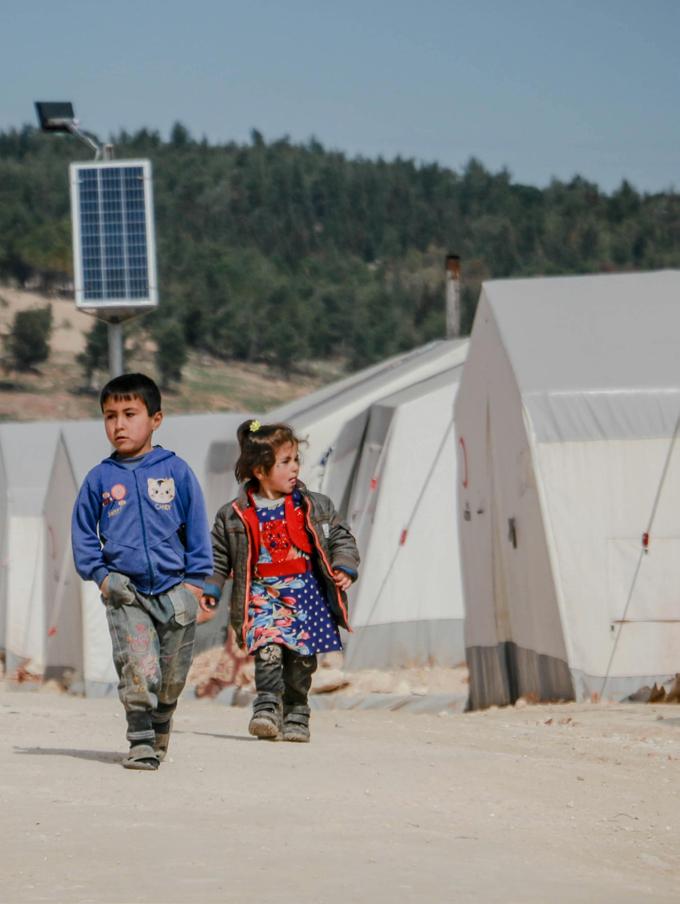
Encounters South African Documentary Festival 20-30
Now in its 26th year, Encounters stands as Africa's premier Documentary Film Festival. This event highlights South African productions alongside top documentaries from around the globe.
Encounters is dedicated to the documentary genre, delving into issues affecting communities and societies, including health, culture, and politics. It provides a global perspective, showcasing differences, connections, challenges, and solutions. The festival has elevated the status of documentaries locally and continent-wide, playing a crucial role in promoting African films.
This festival encompasses the transformative power of documentary film. It seeks to inform, challenge, support, and engage audiences both emotionally and intellectually, fostering mutual understanding and dialogue.

Public Sector Leaders | June 2024 | 61
Sources: Awareness Days | United Nations High Commissioner for Refugees | Global Dimension

62| Public Sector Leaders | June 2024

Public Sector Leaders | June 2024 | 63
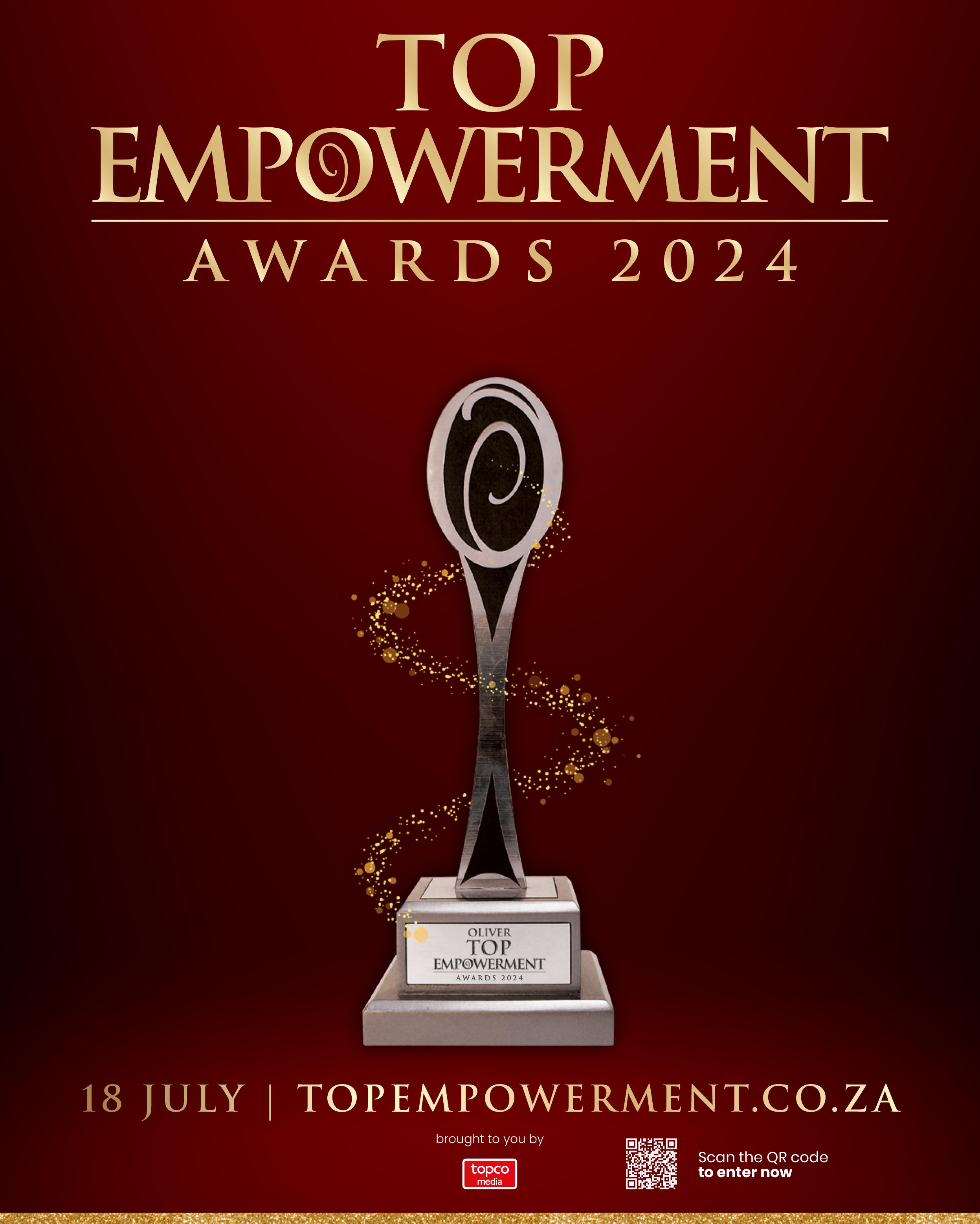















































 FIONA WAKELIN | GROUP EDITOR
FIONA WAKELIN | GROUP EDITOR

 BY FIONA WAKELIN AND KOKETSO MAMABOLO
BY FIONA WAKELIN AND KOKETSO MAMABOLO




































 BY JESSIE TAYLOR
BY JESSIE TAYLOR







 Source: SA Rugby | Planet Rugby | Nelson Mandela Foundation | Department of Sport, Arts and Culture
BY WANDILE SIHLOBO
Source: SA Rugby | Planet Rugby | Nelson Mandela Foundation | Department of Sport, Arts and Culture
BY WANDILE SIHLOBO
















































